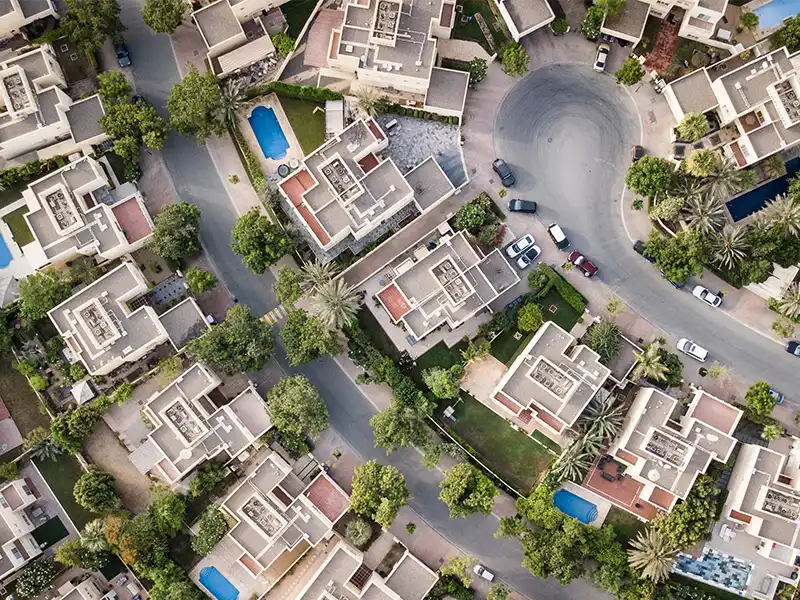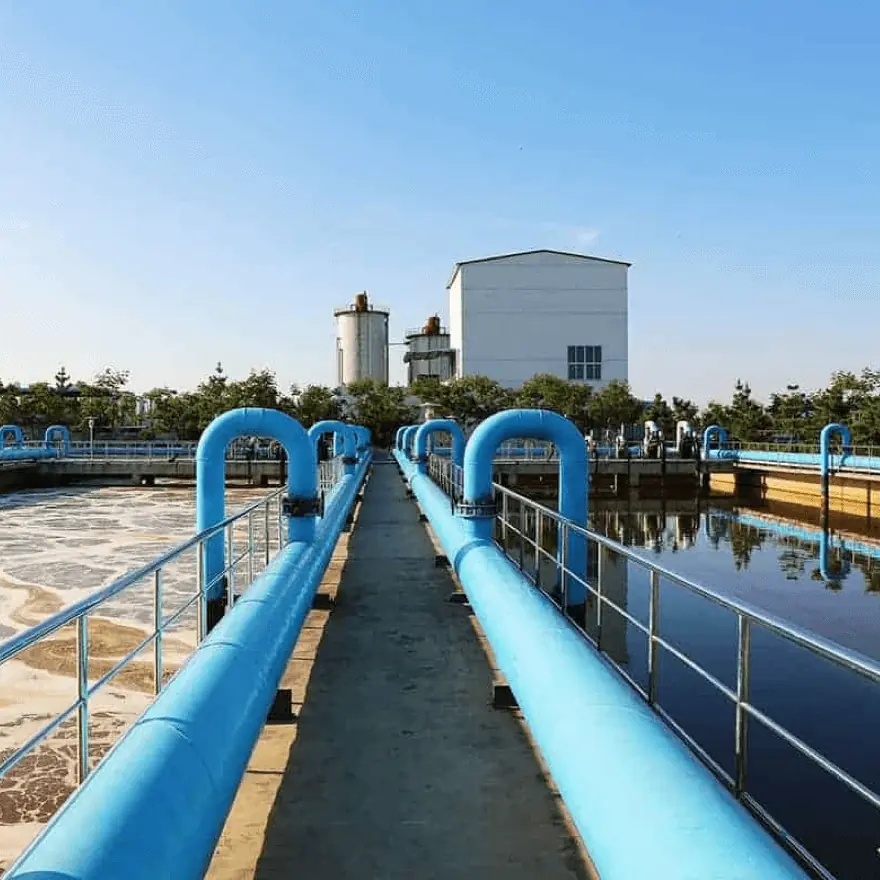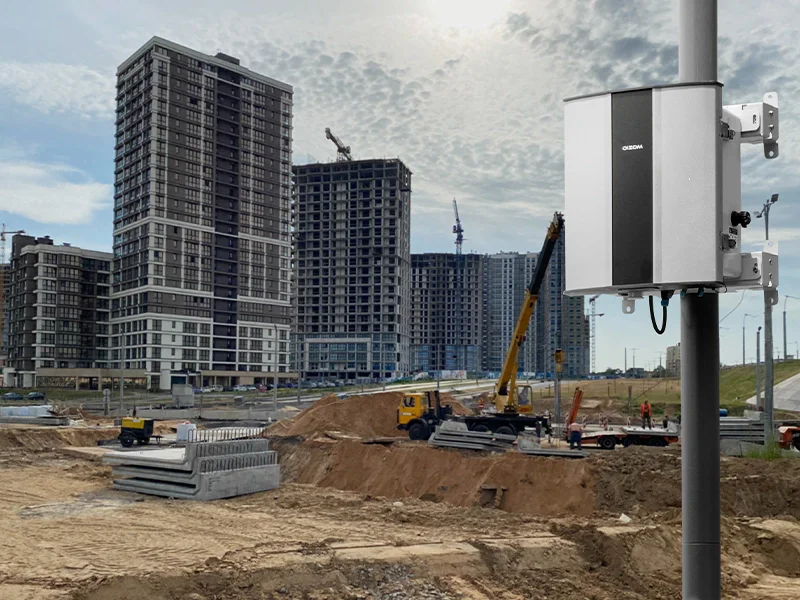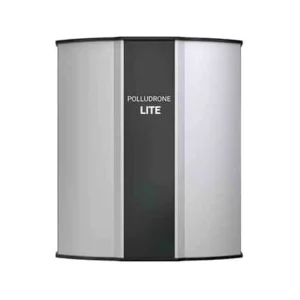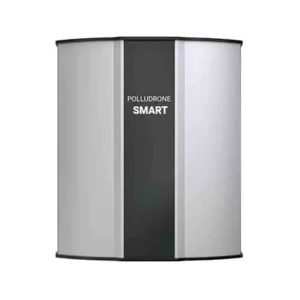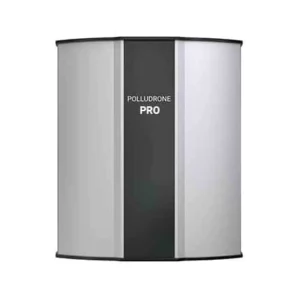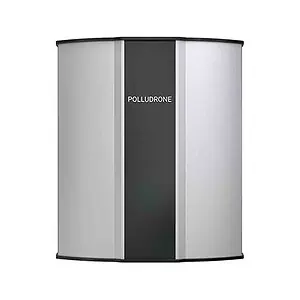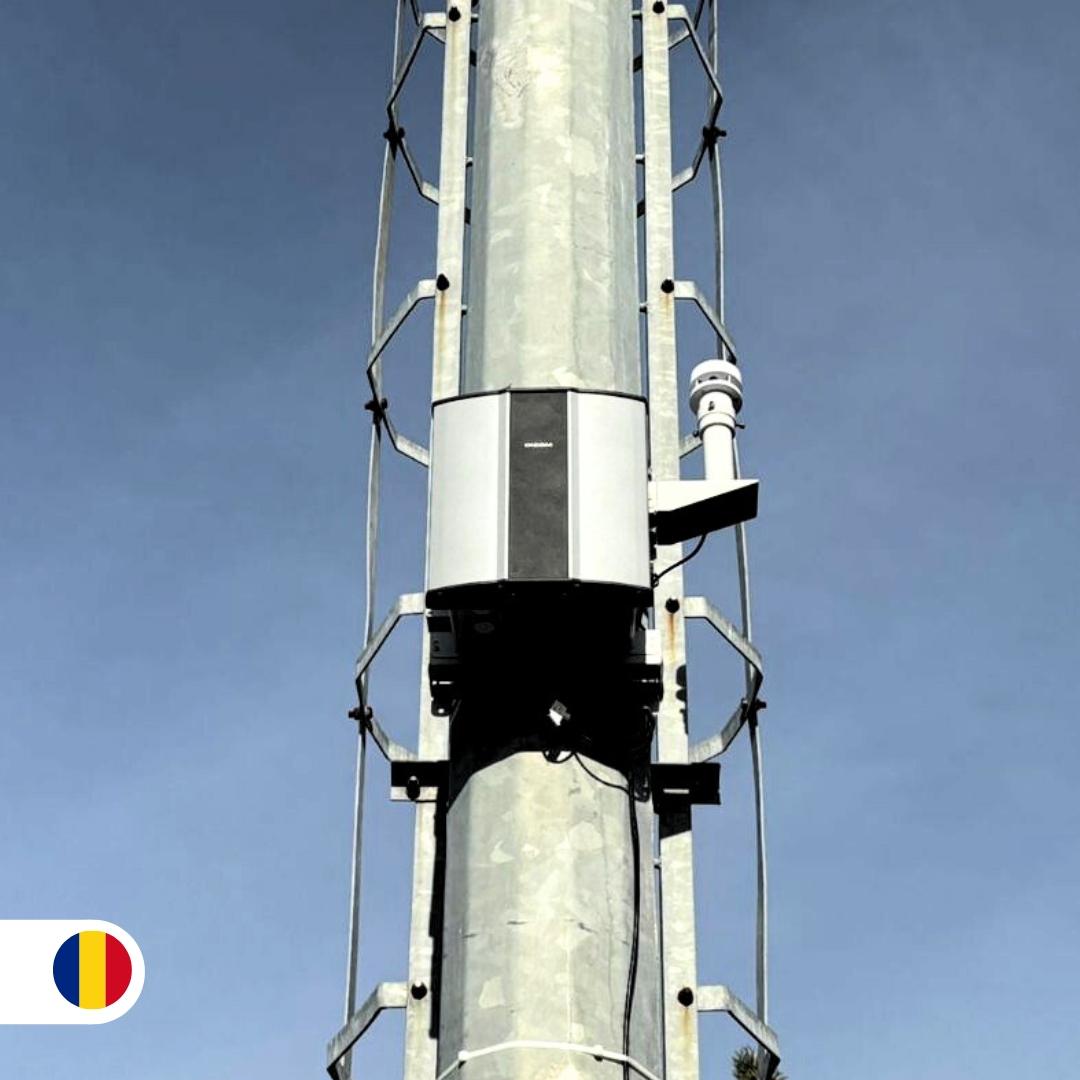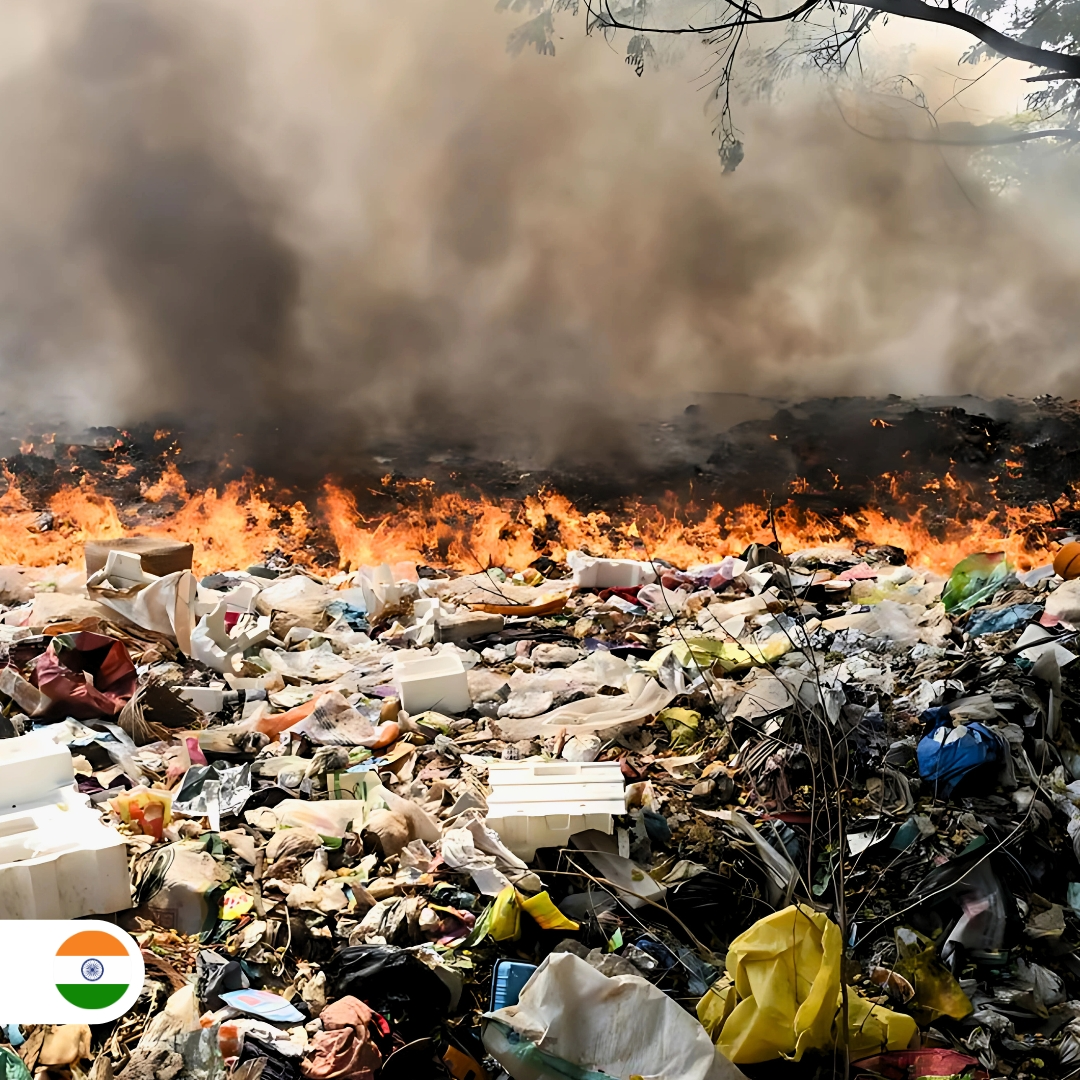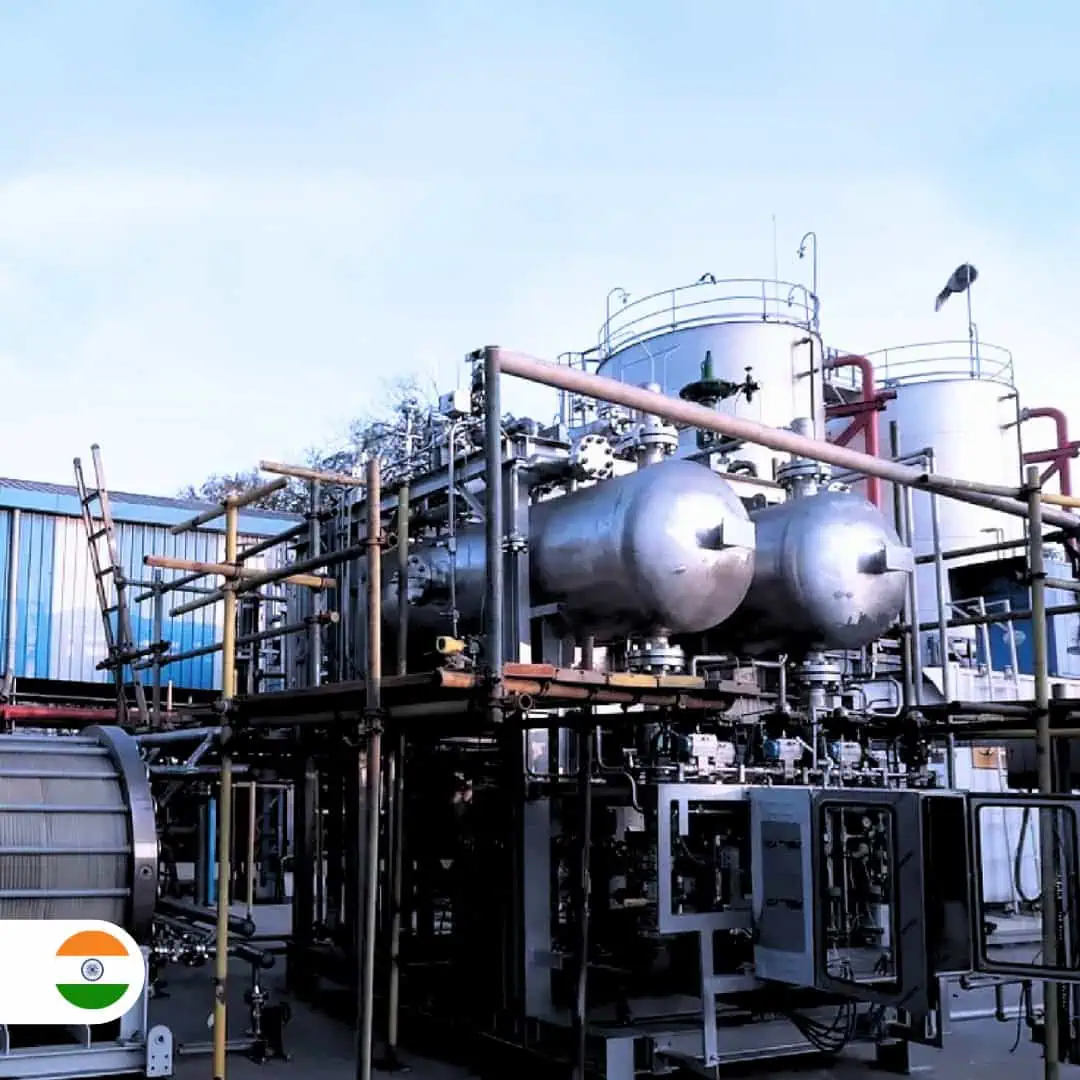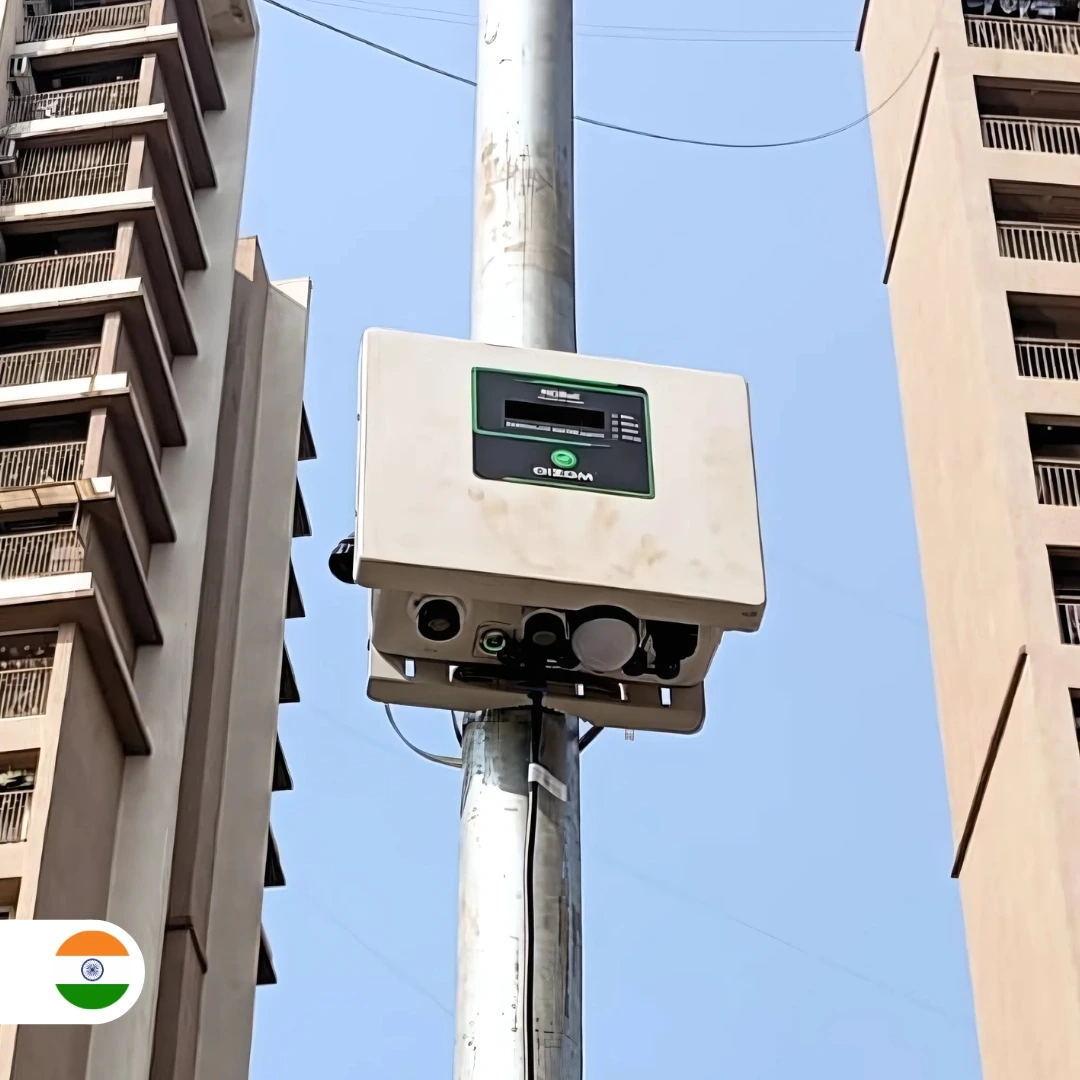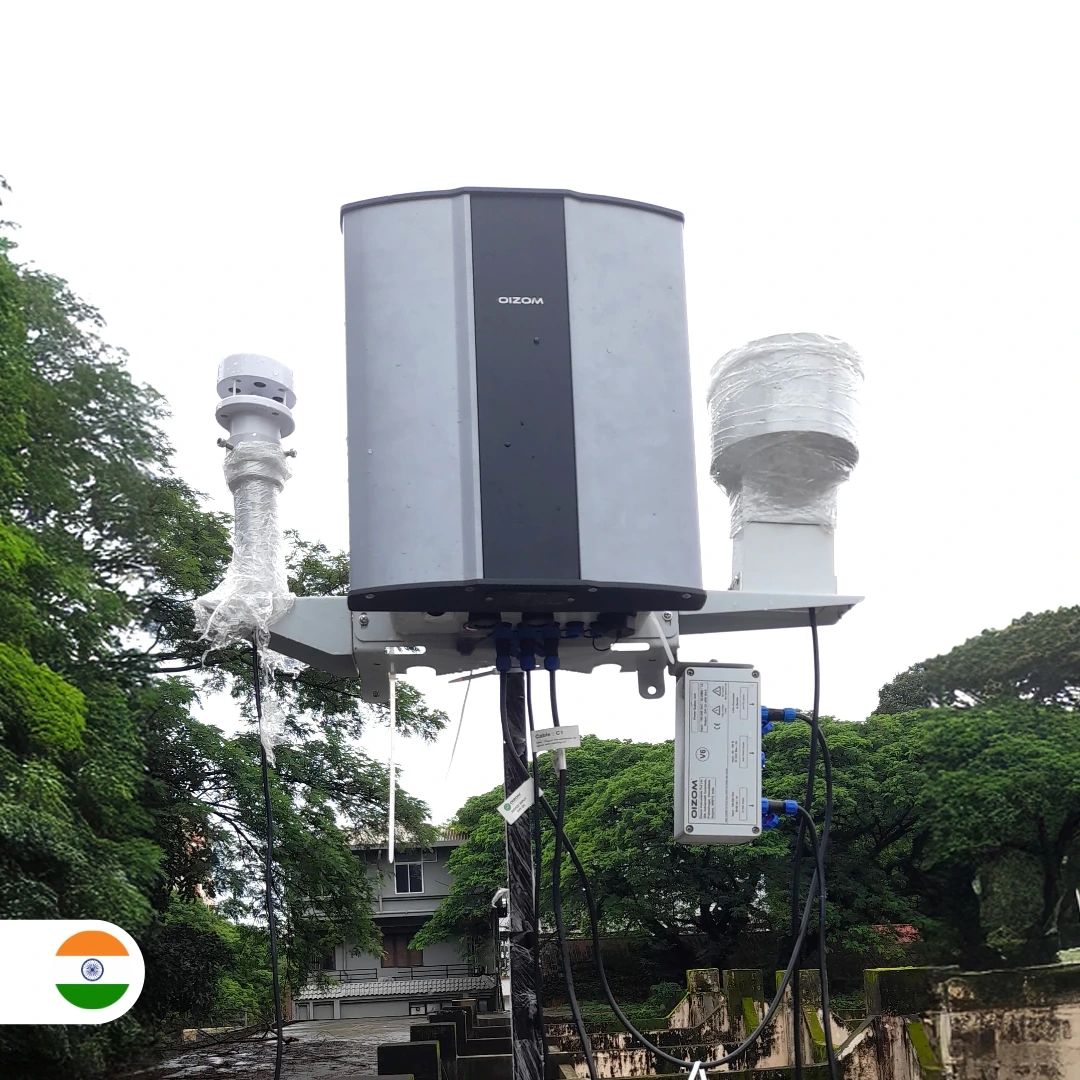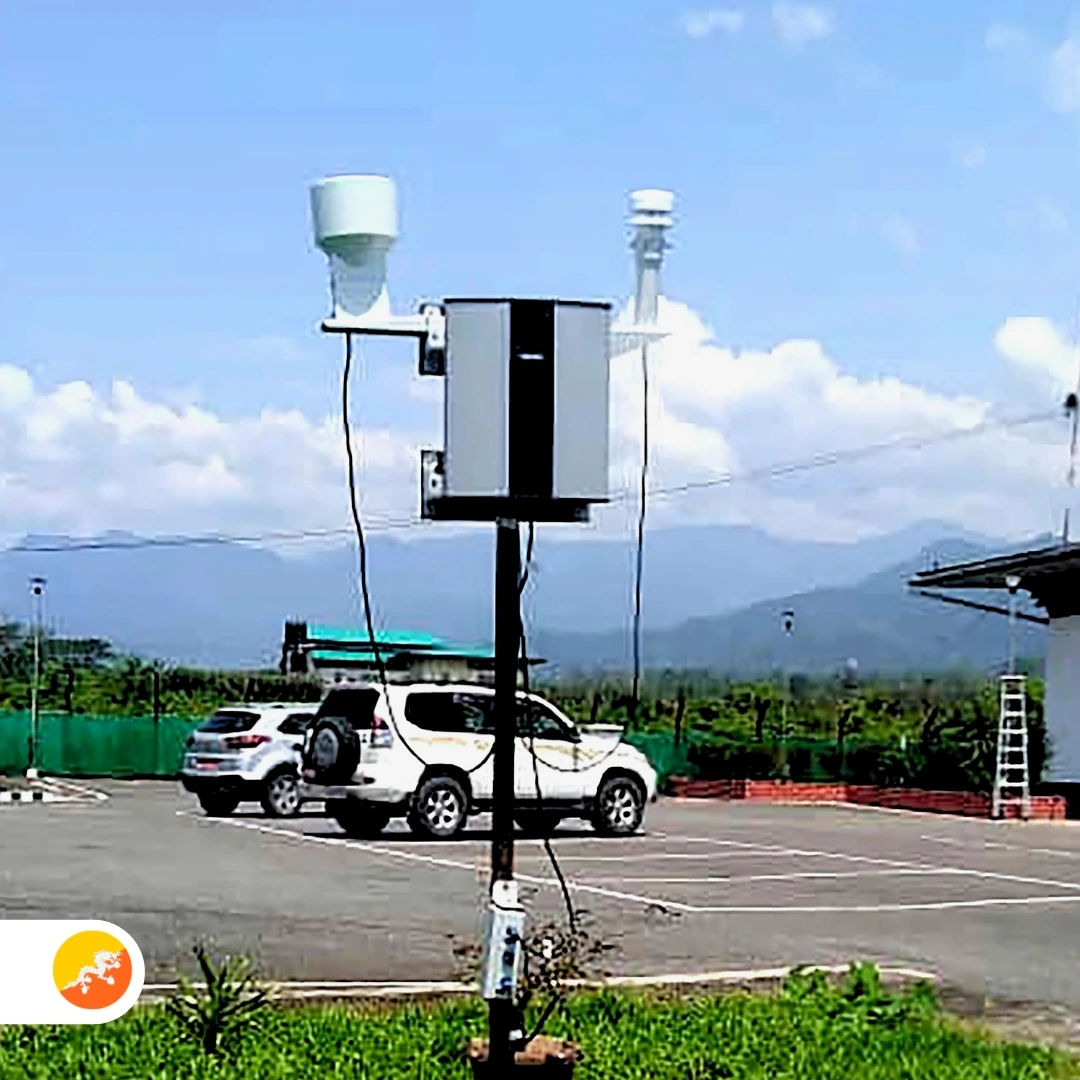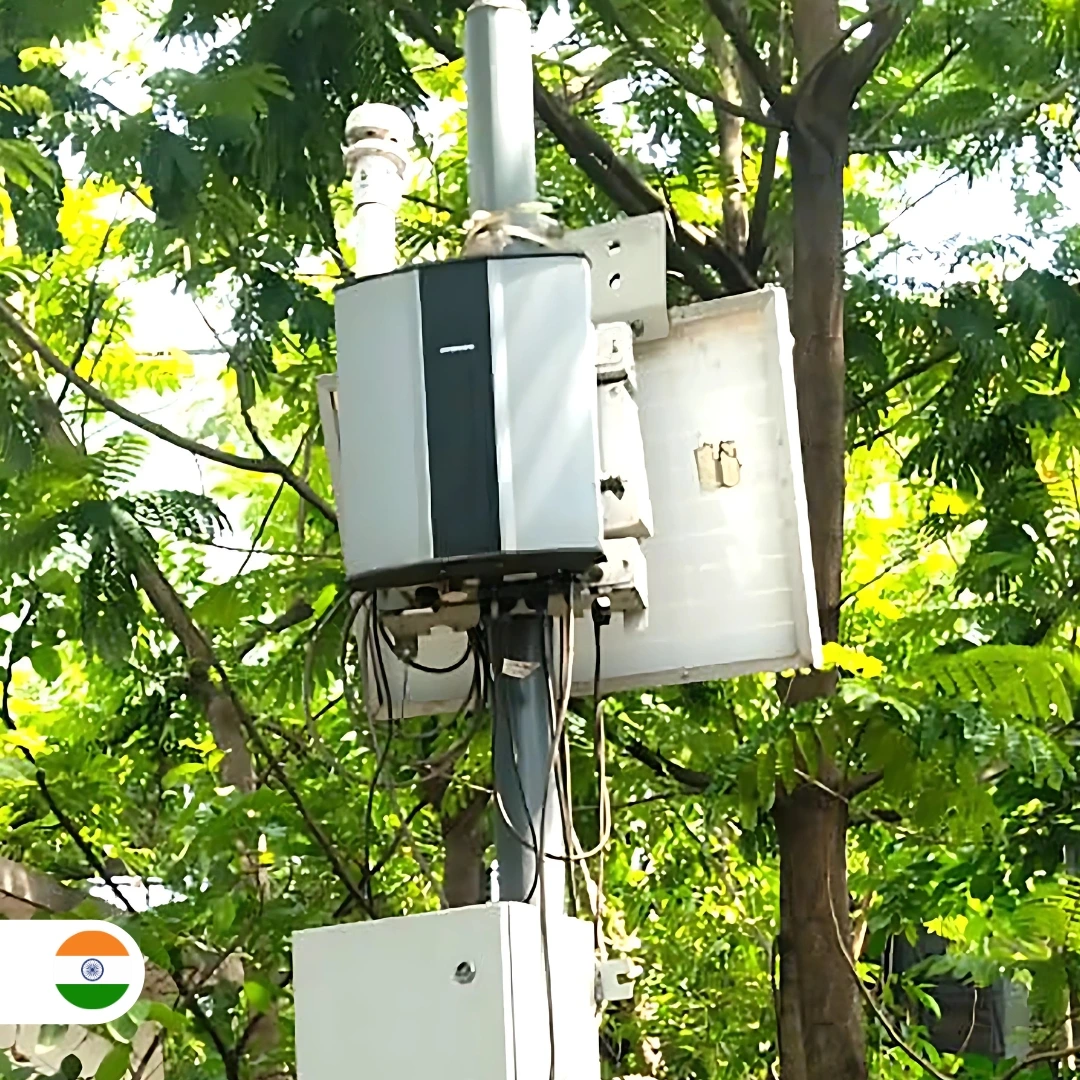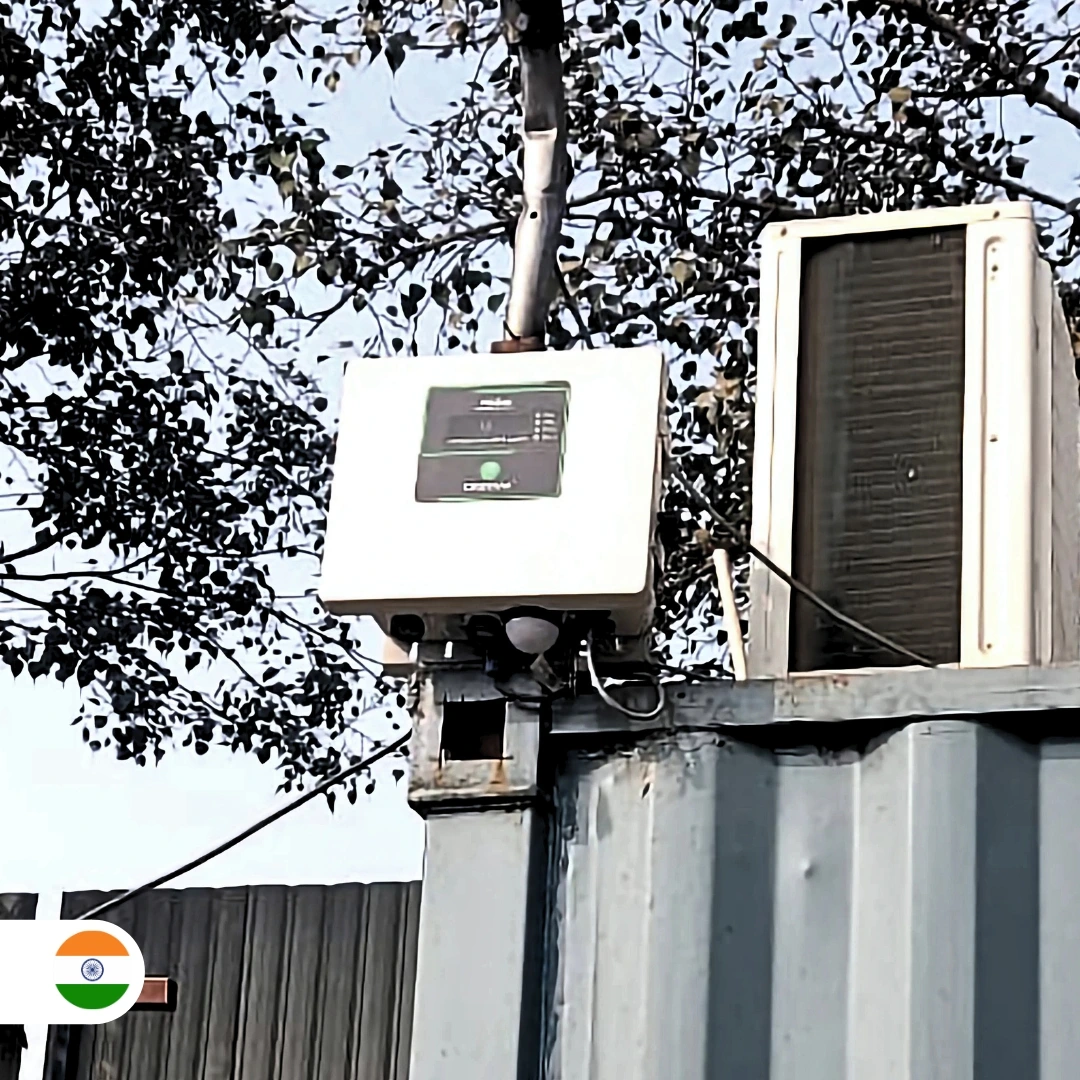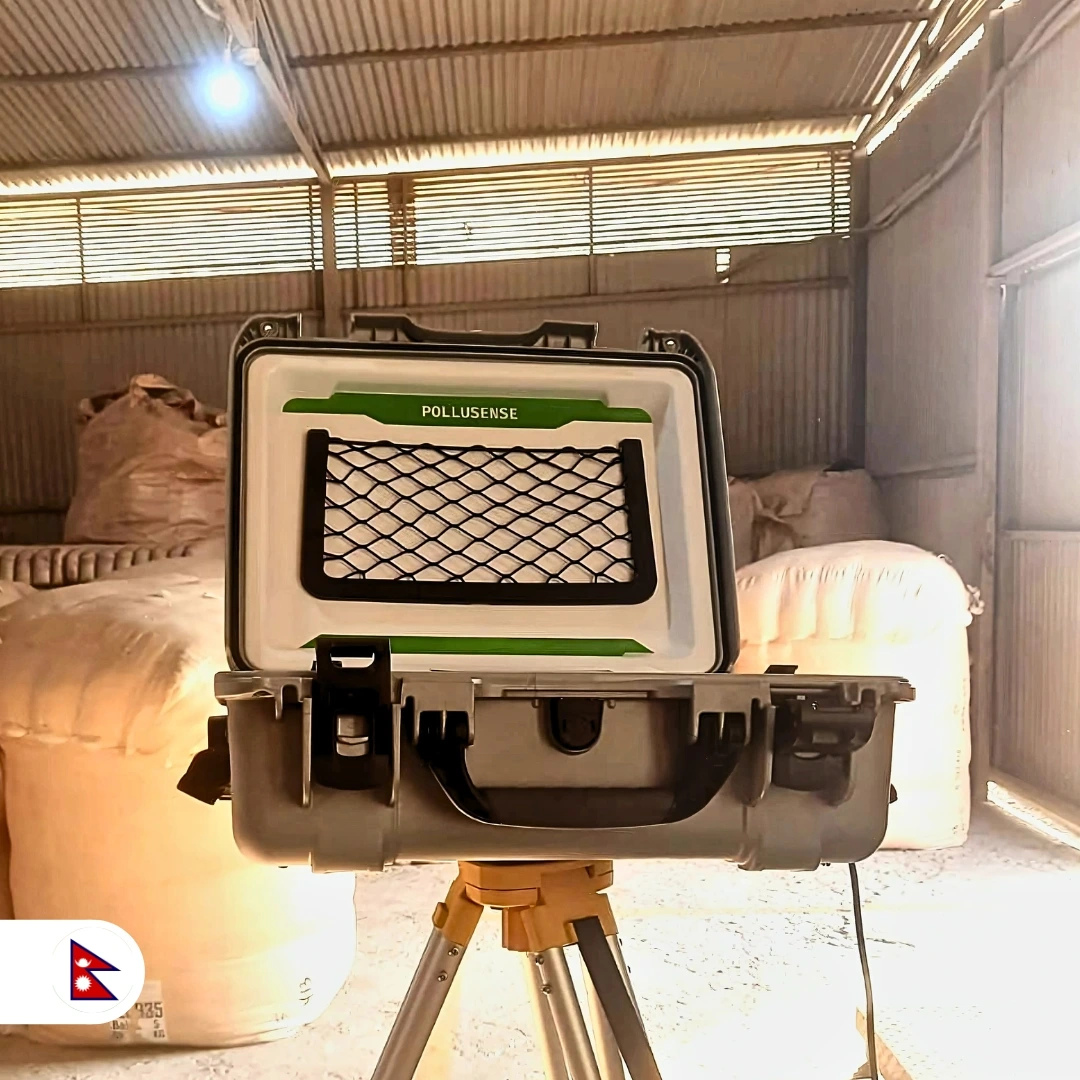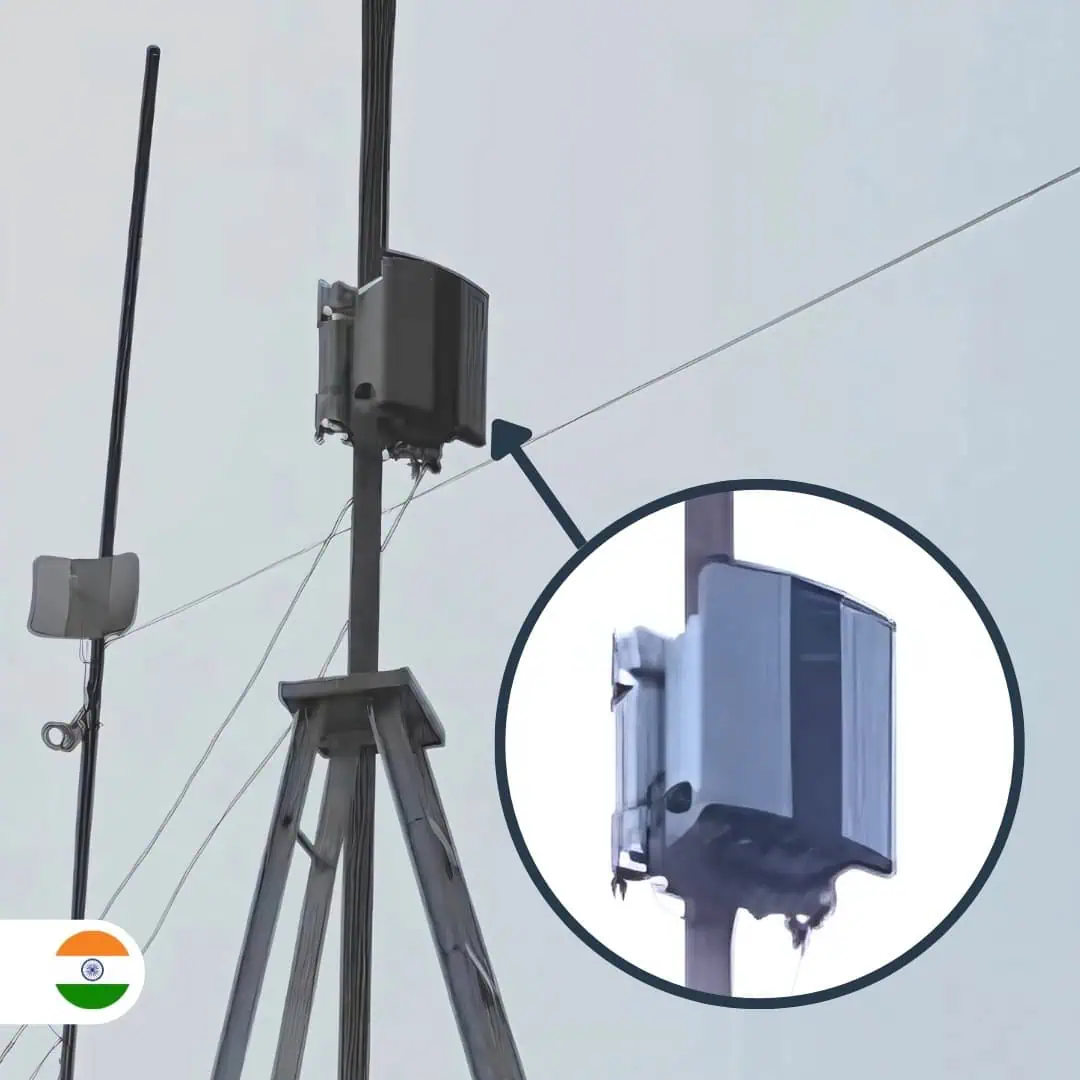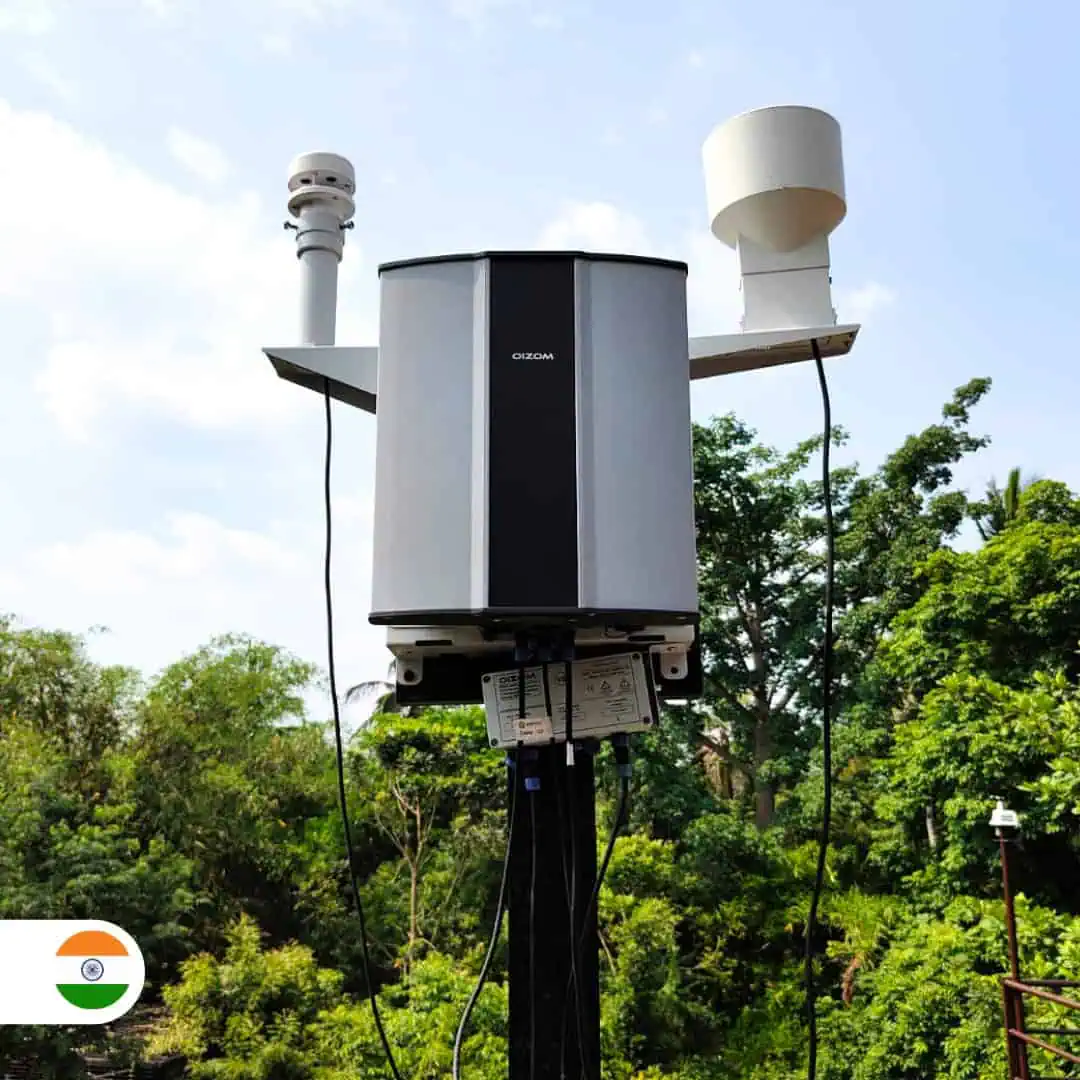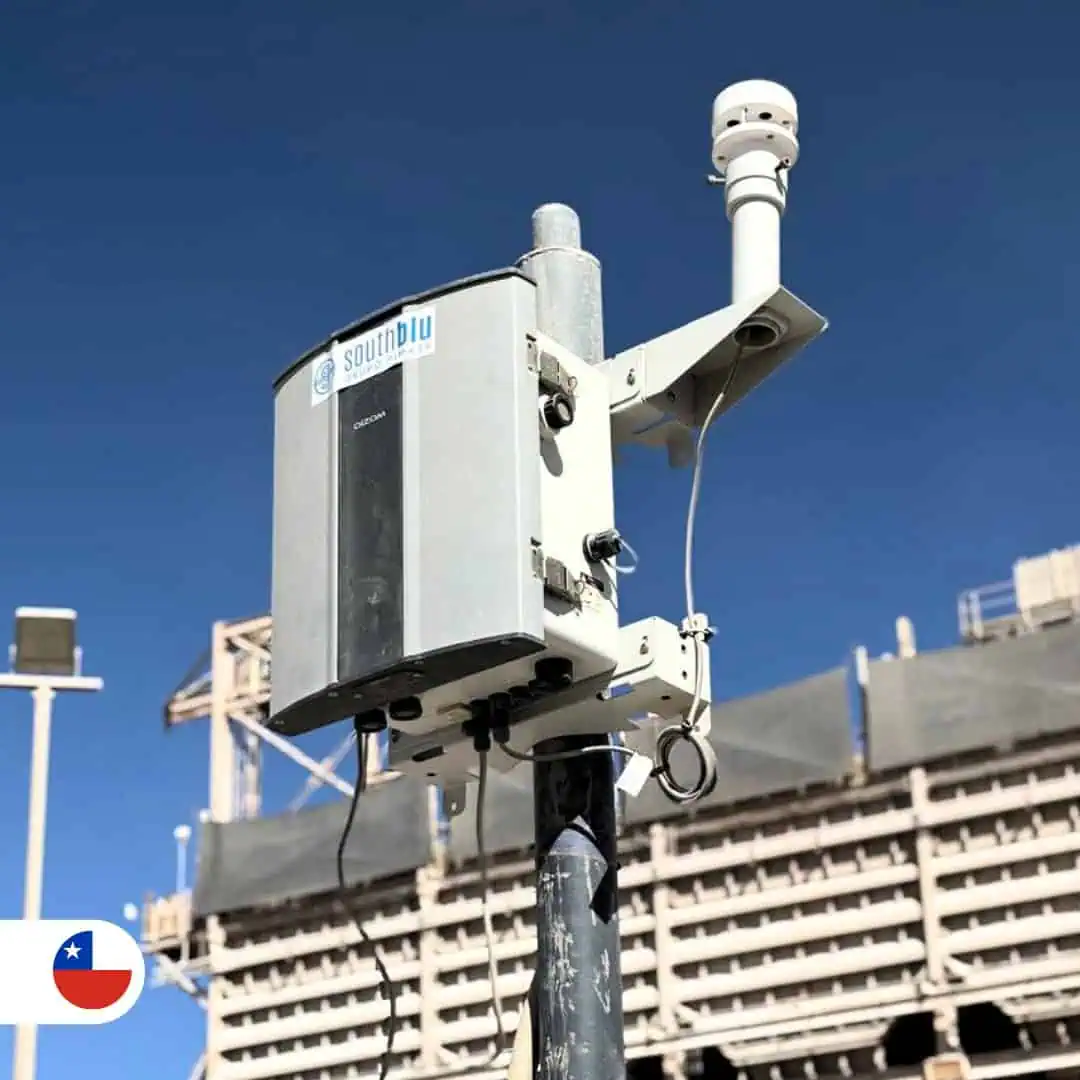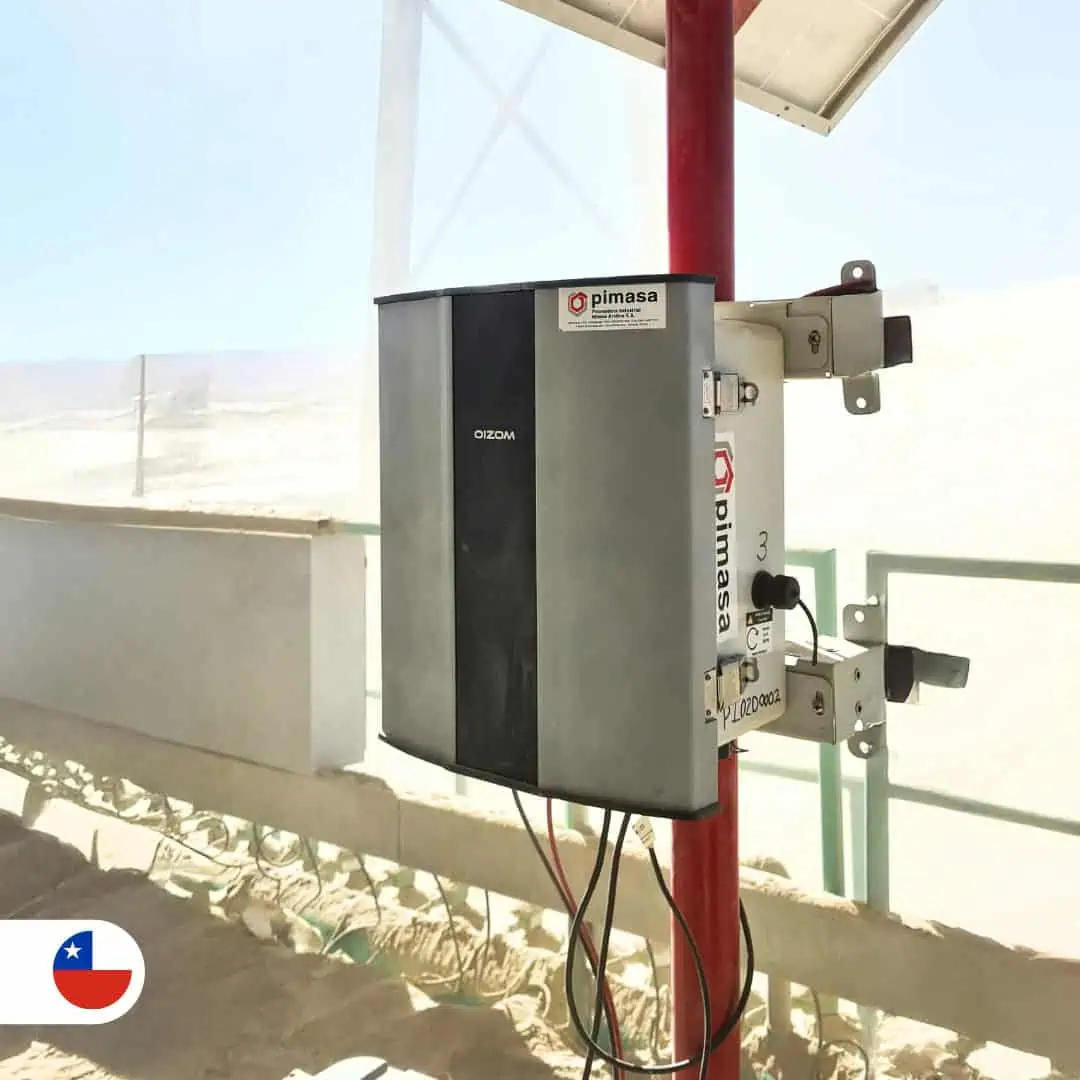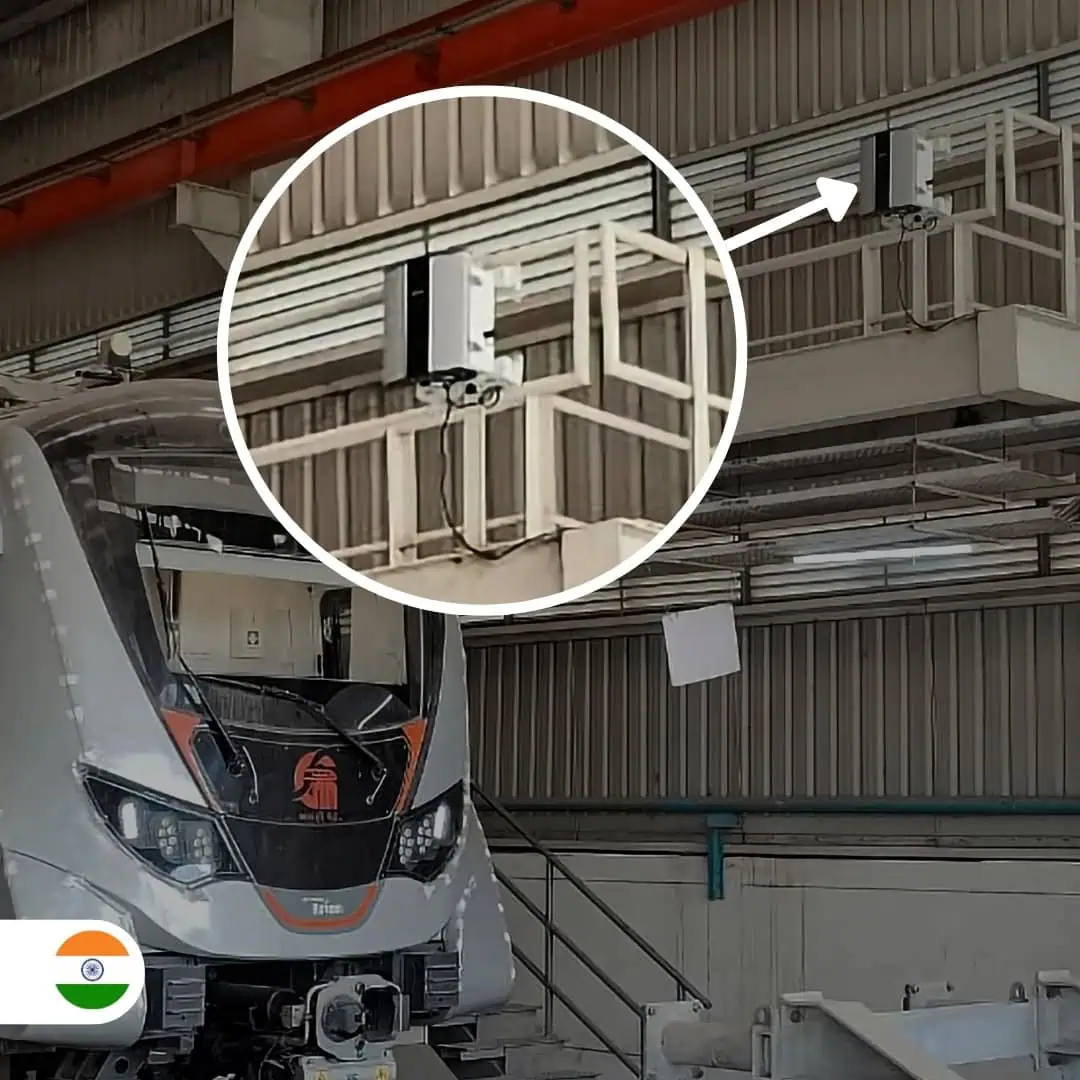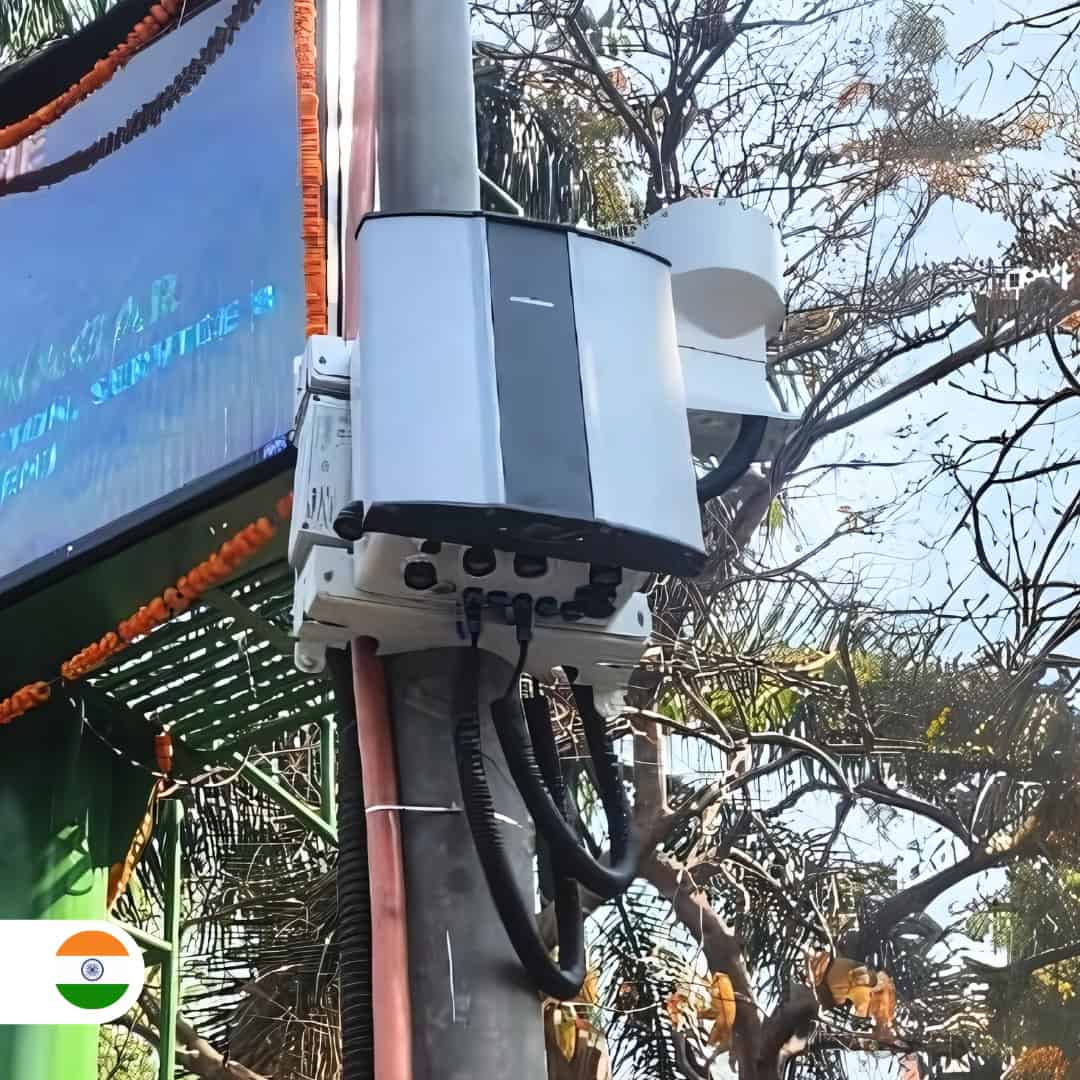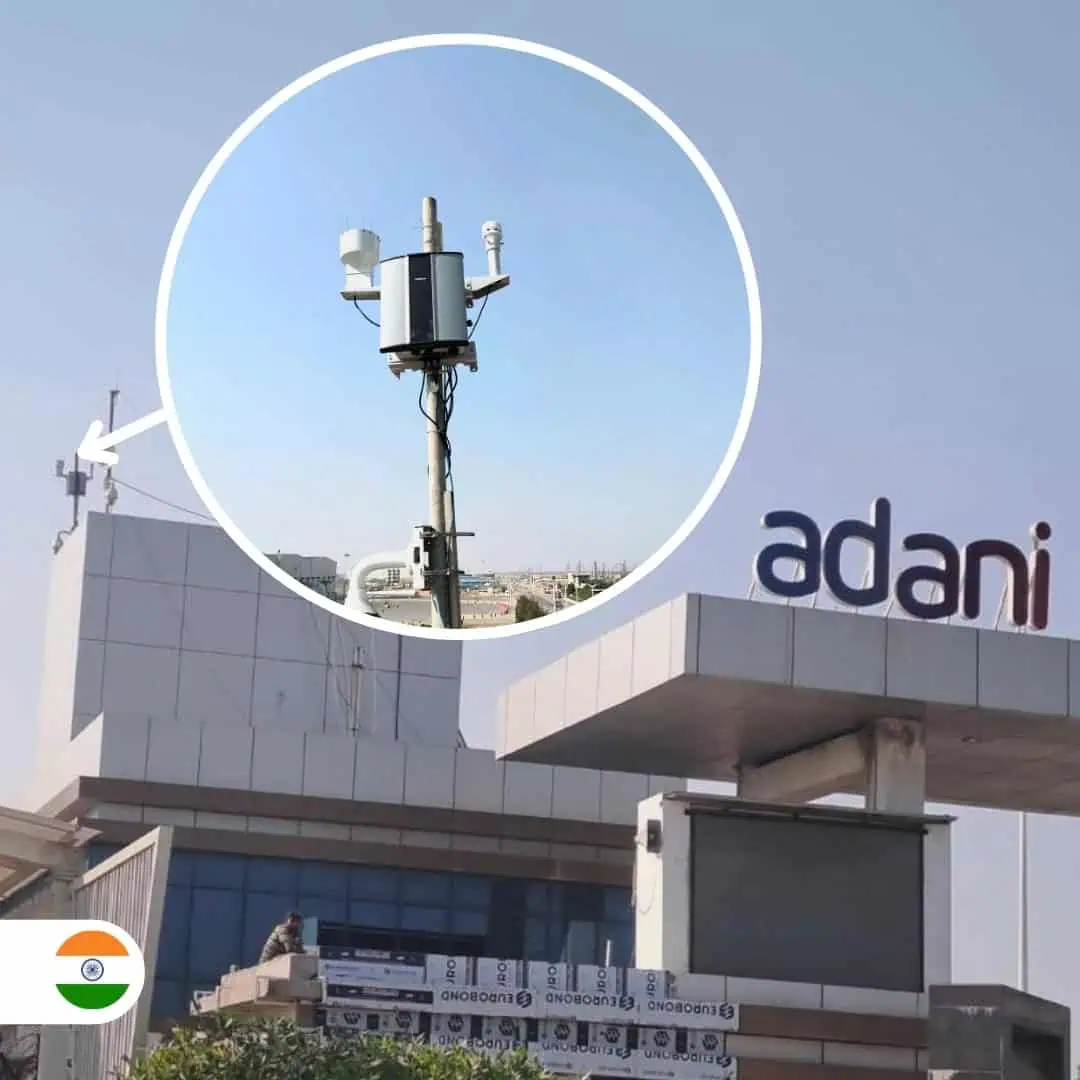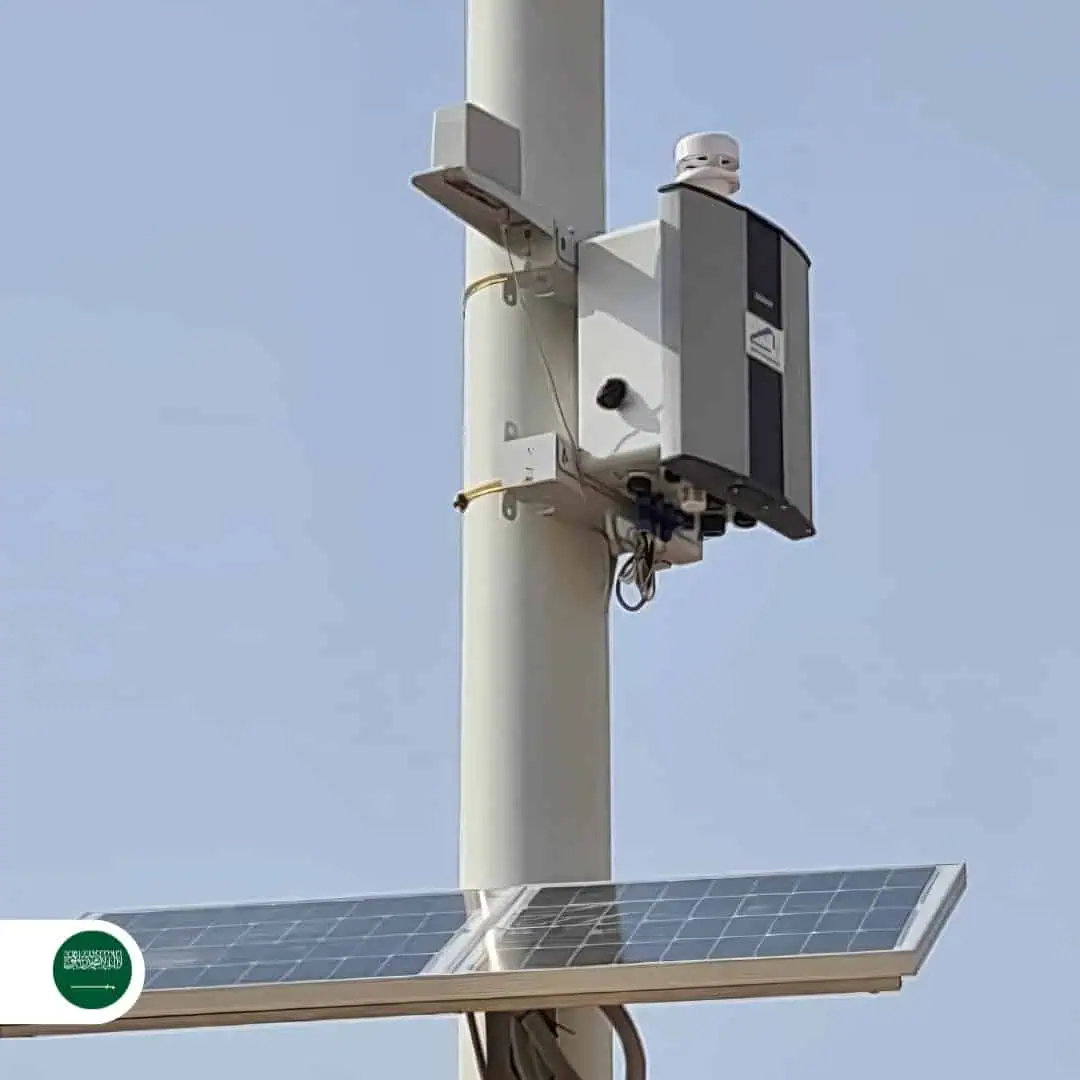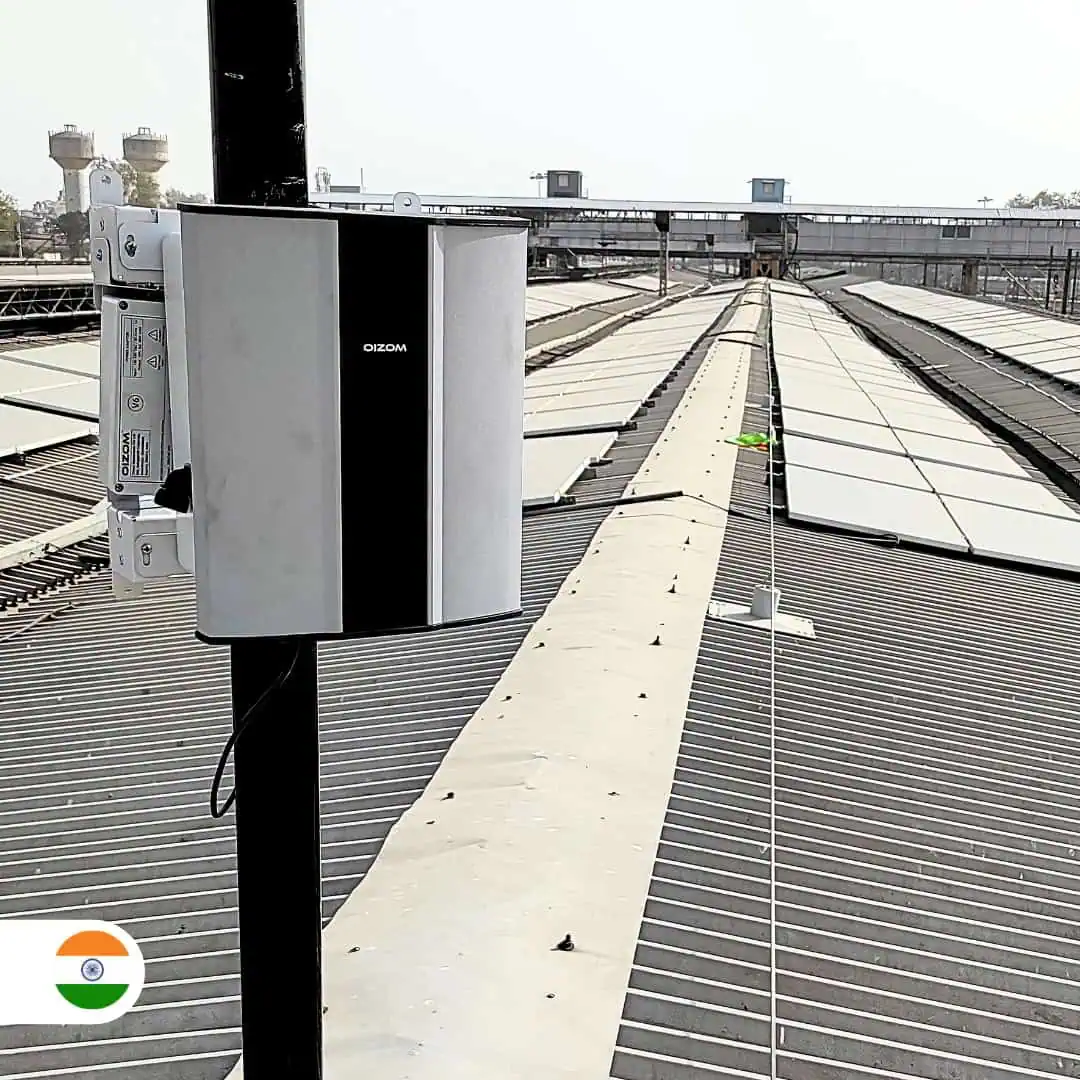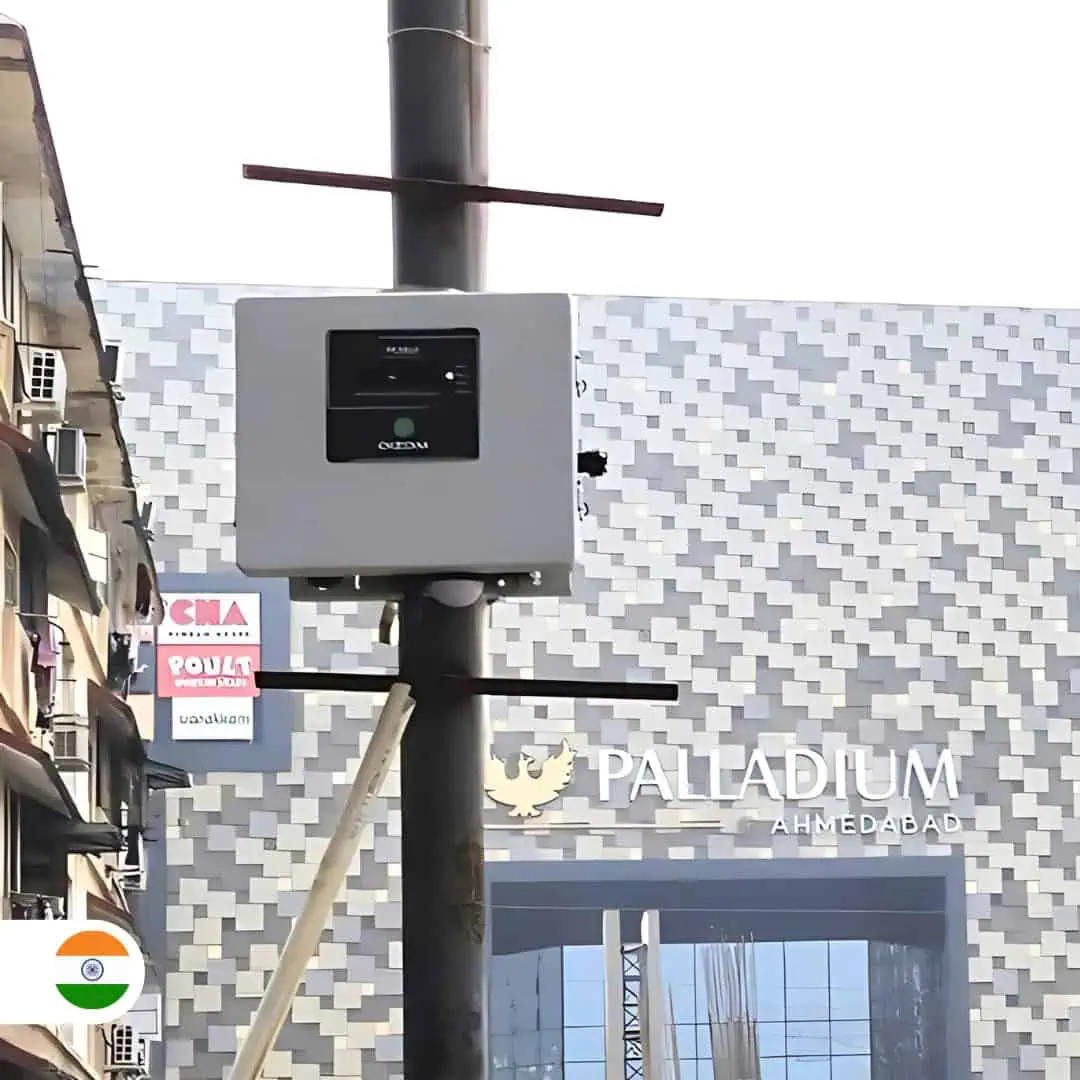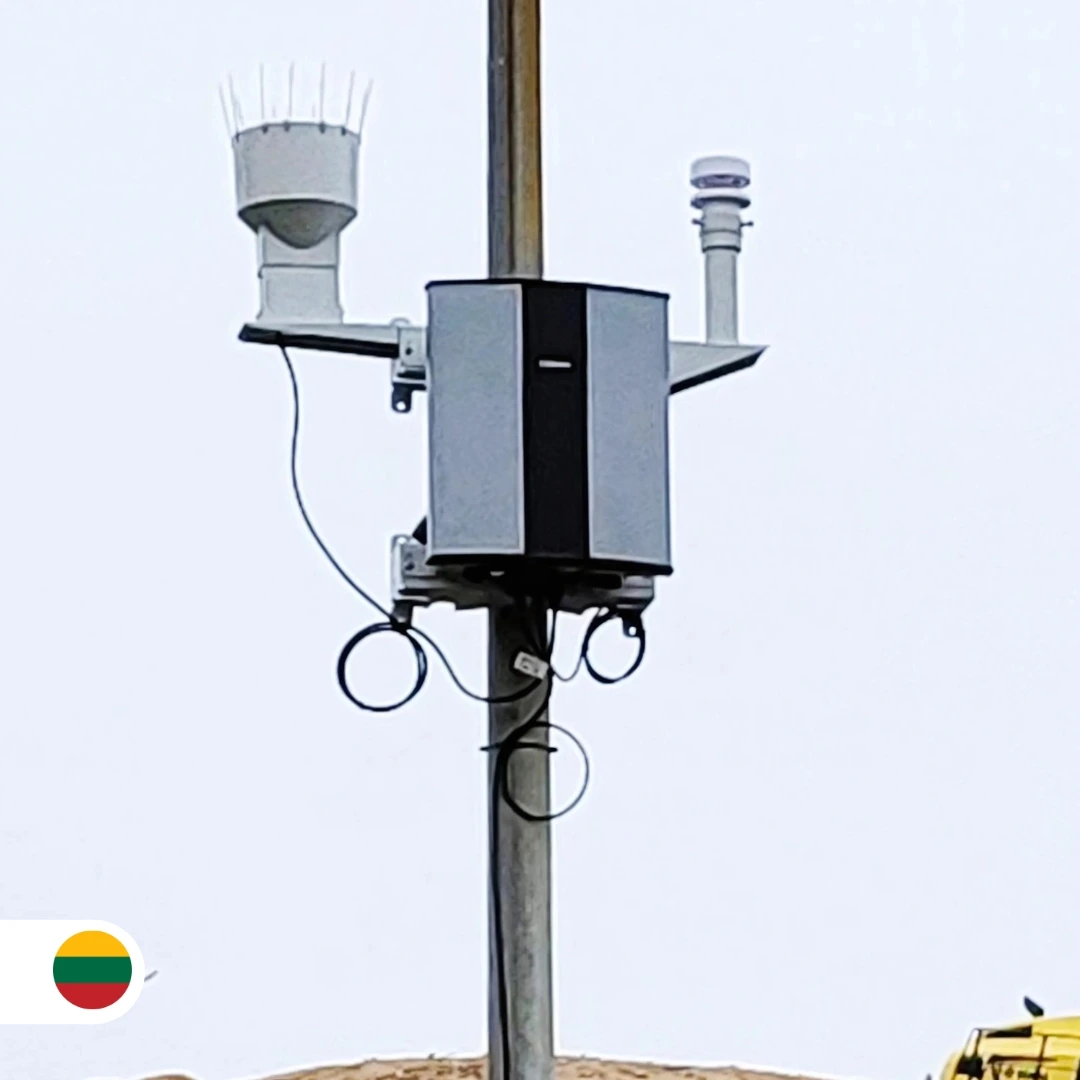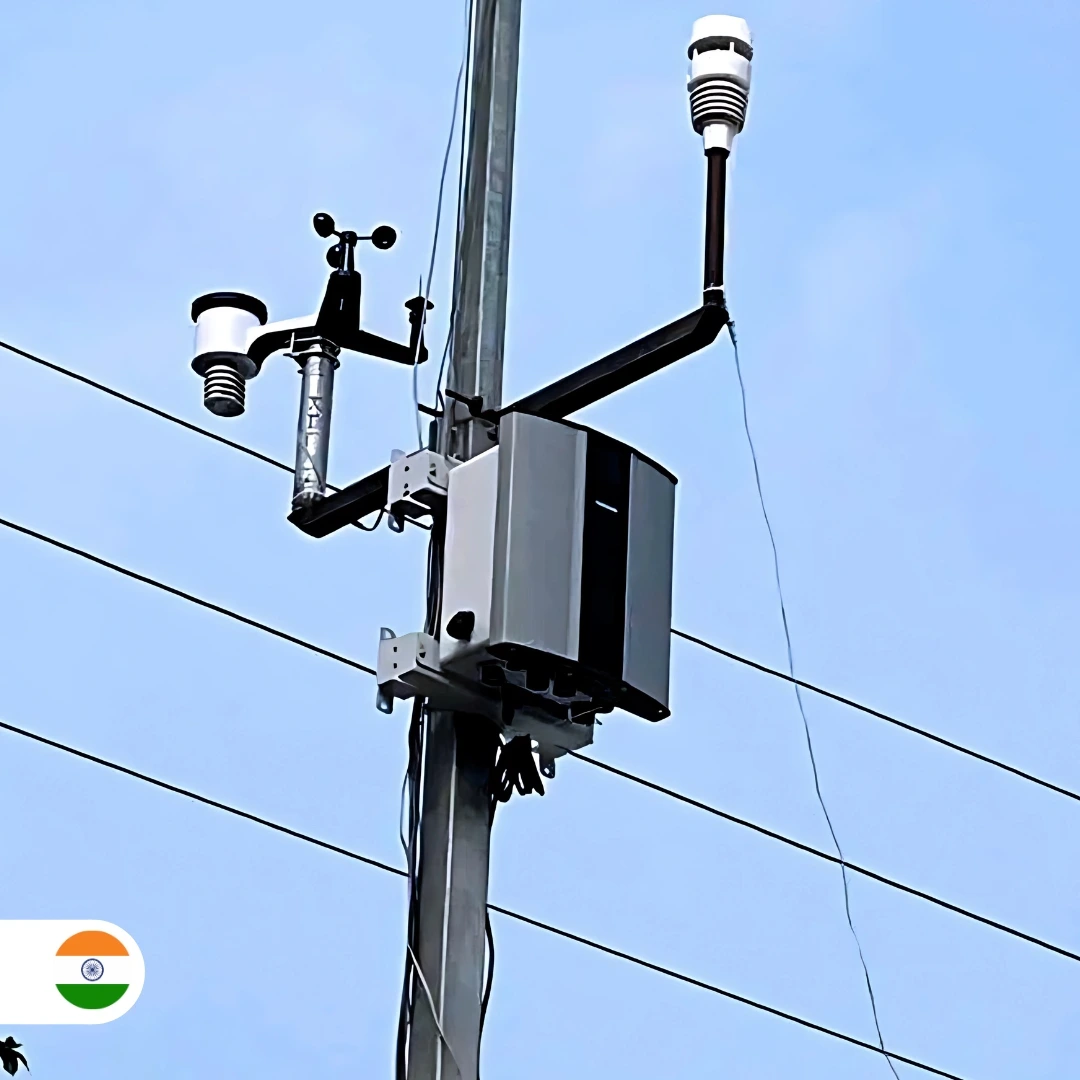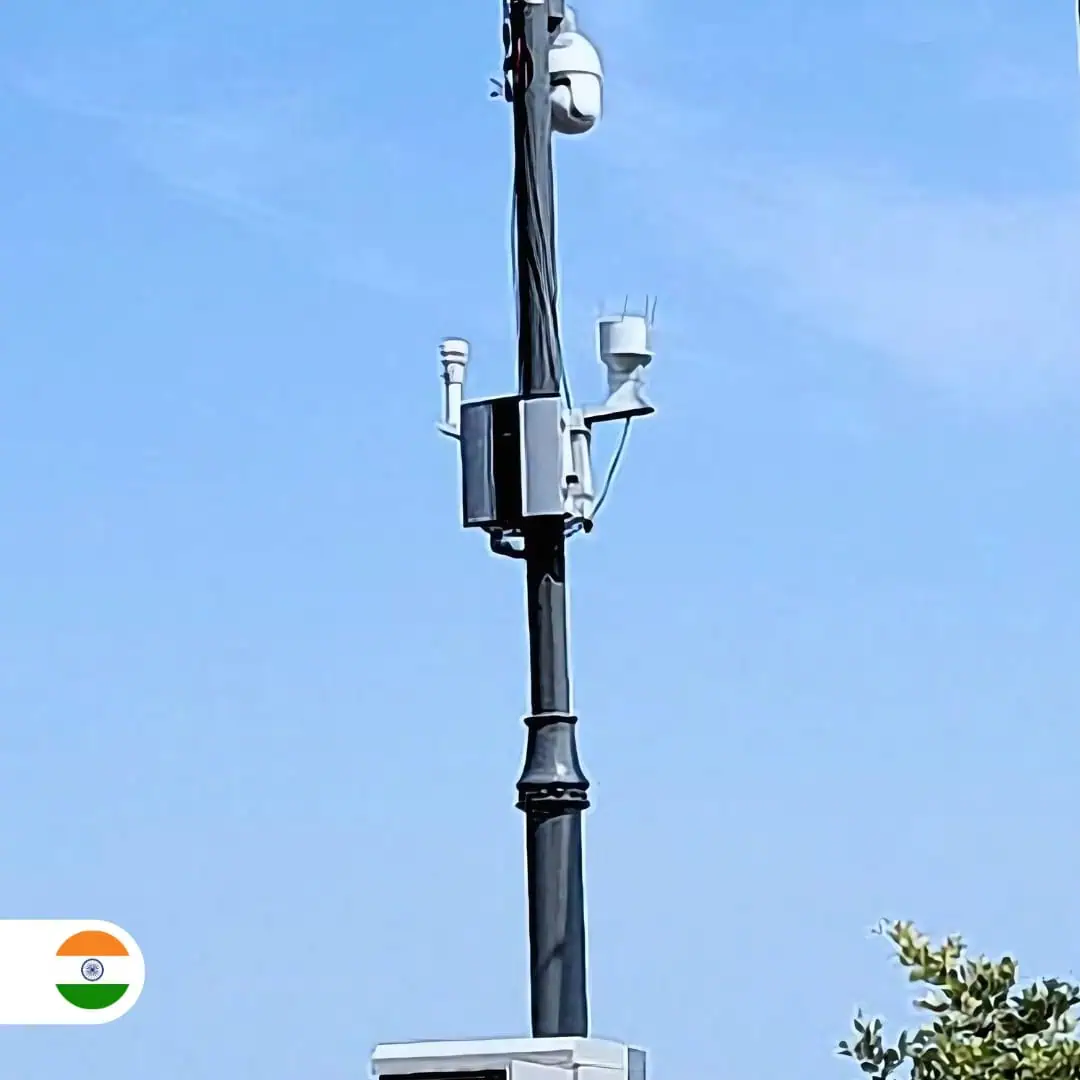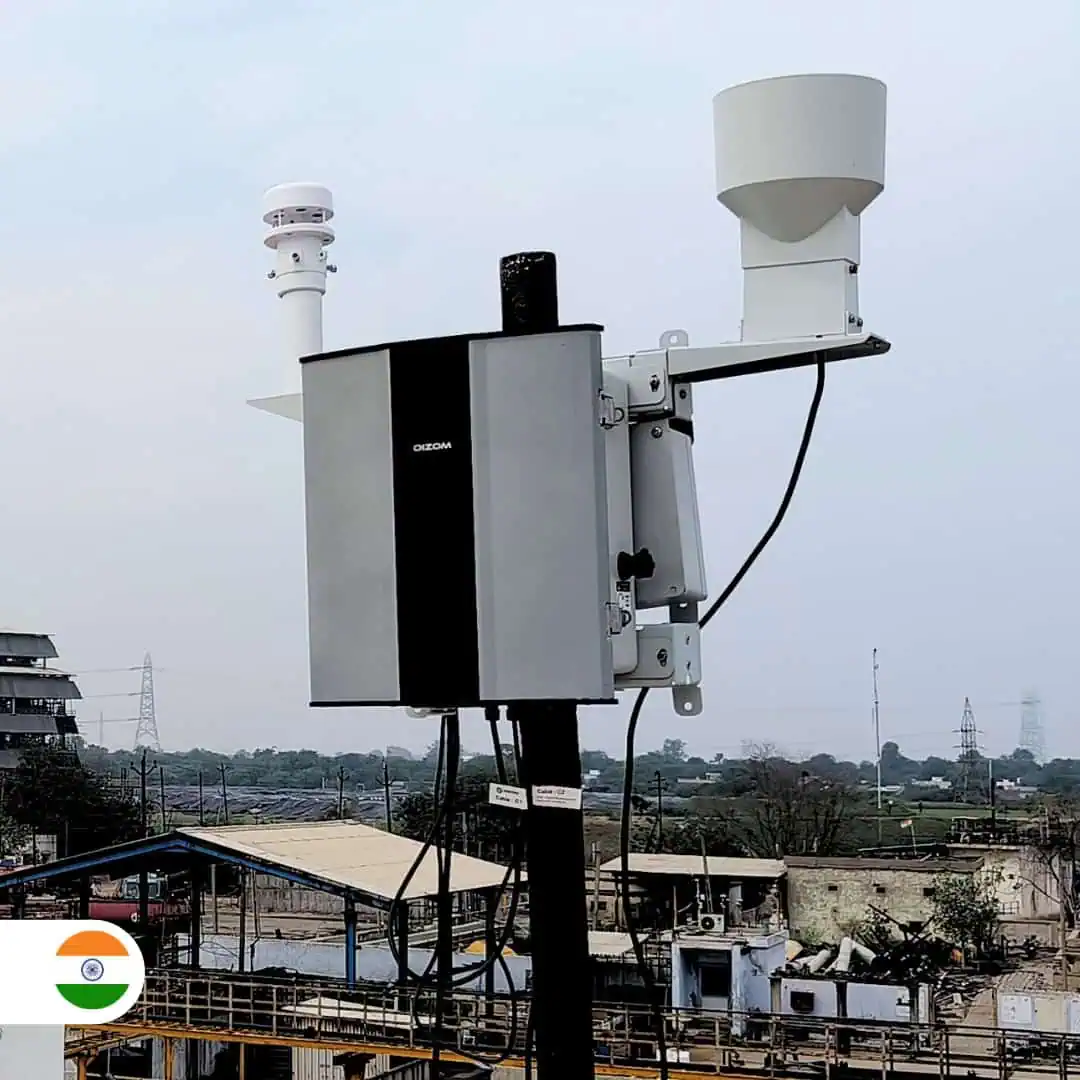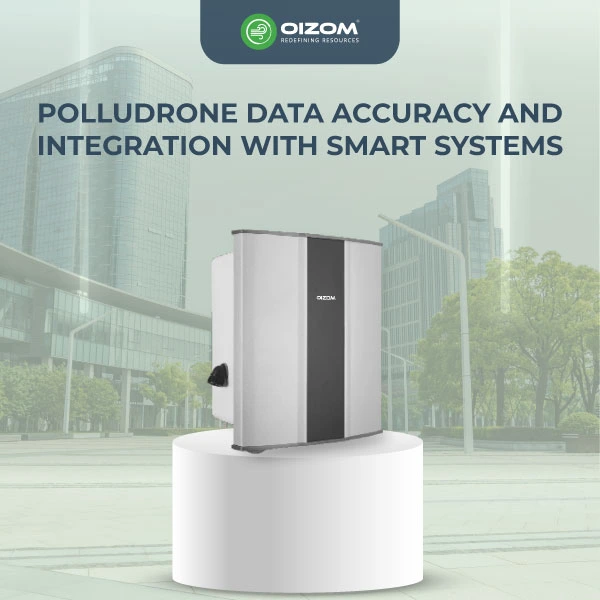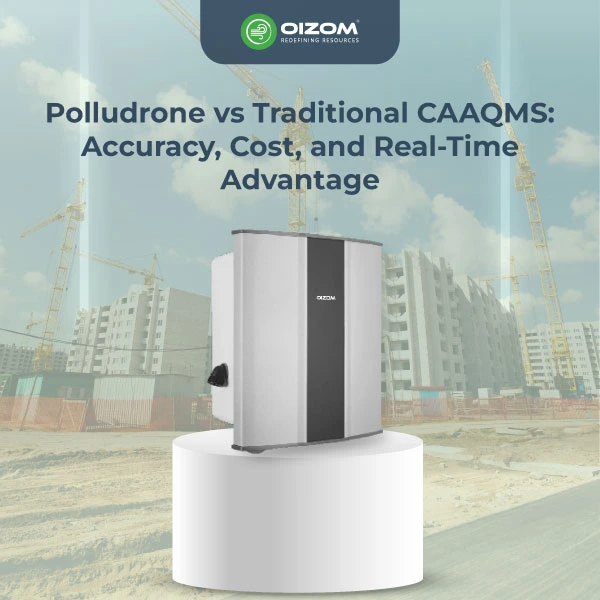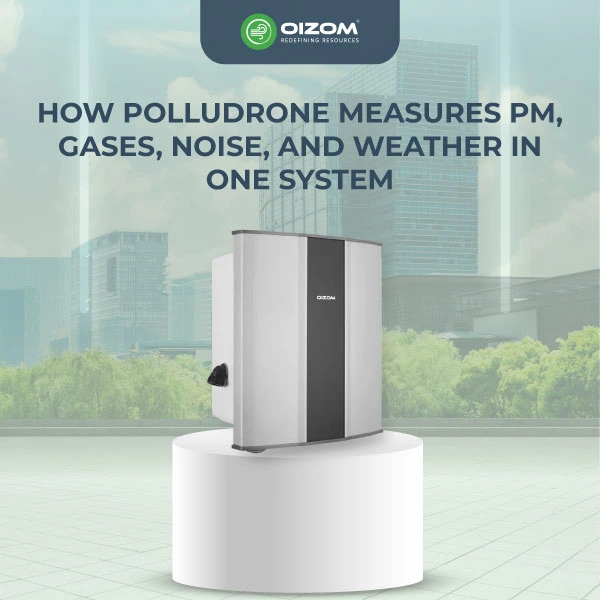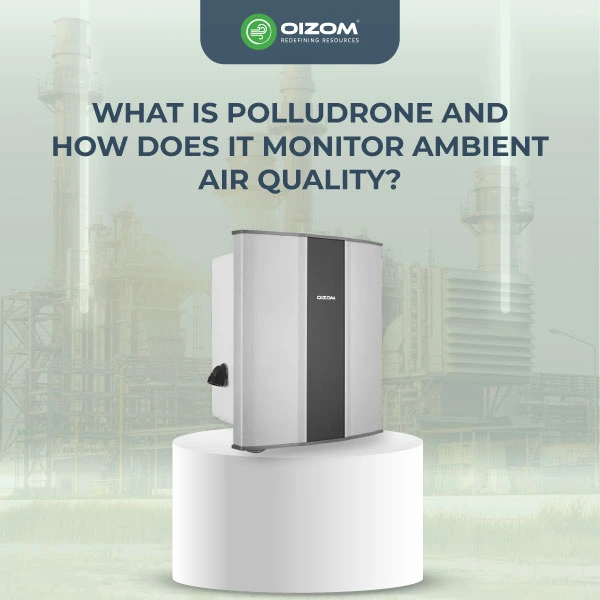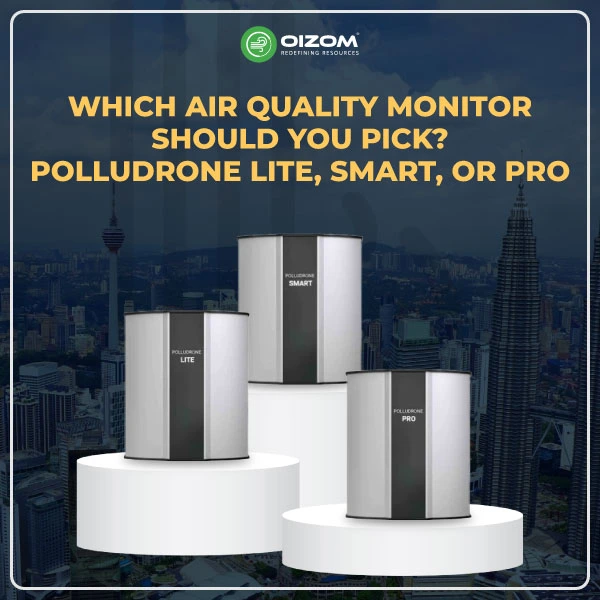Real-Time Ambient Air Quality Monitor
A smart air quality monitoring system built to measure real-time outdoor air pollution levels with precision. Designed for both industrial and community-level applications.
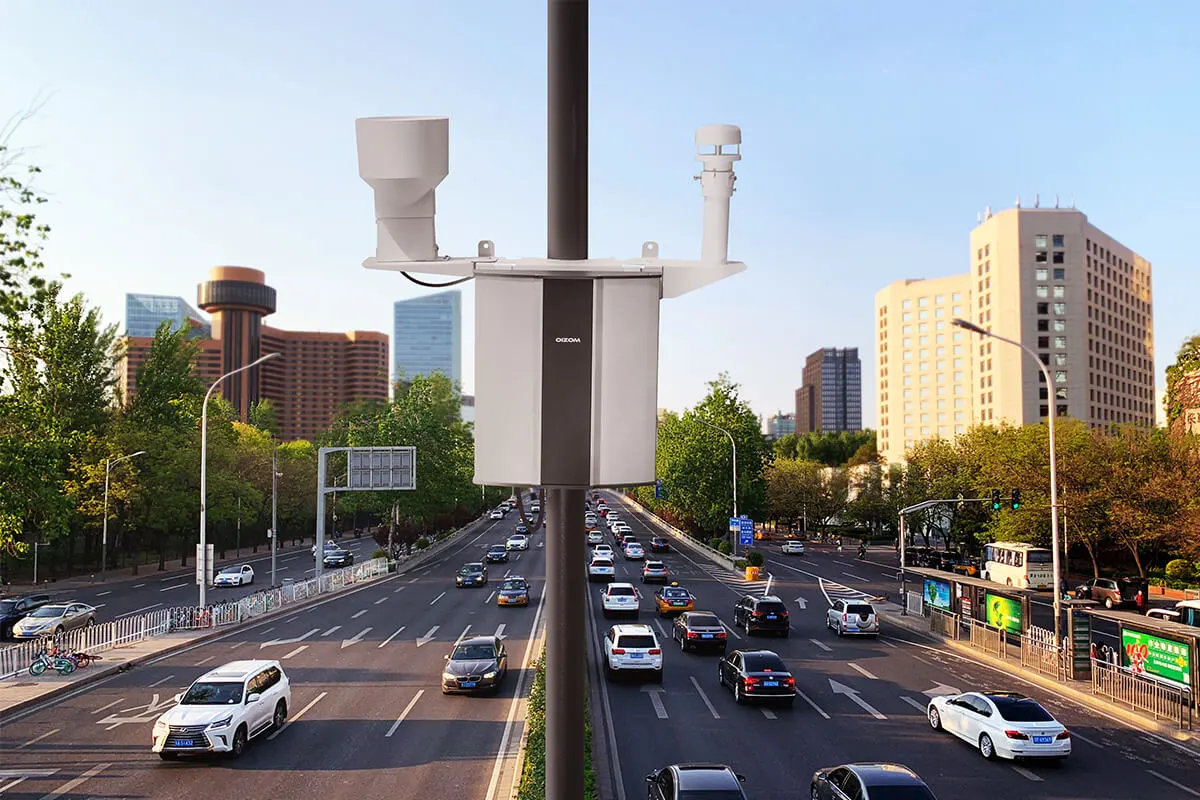
A Multiparameter Air Quality Monitoring System
Polludrone
Air pollution isn’t just a global concern; it’s a growing local problem across the US. From wildfire smoke in the West to industrial emissions in urban centers, the need for reliable, continuous outdoor air quality data is more critical than ever.
Polludrone is a real-time air quality monitoring system that helps cities, industries, and infrastructure managers stay ahead of environmental risks. Equipped with high-grade environmental monitoring sensors, it tracks key pollutants and climatic conditions to give you accurate, actionable insights.
Whether you’re managing public health, regulatory compliance, or ESG reporting, Polludrone provides a reliable way to measure and respond to outdoor air quality in real-time.
Benefits of Using Air Quality Monitoring System
With Polludrone, environmental monitoring is no longer a complex task reserved for the experts; it is a user-friendly, empowering experience for all. Its superior design, outstanding features, and uncompromising quality make it a prime choice for anyone looking to monitor air quality with precision and ease.
Polludrone boasts integrated, corrosion-proof sensors and in-built calibration software, ensuring accurate, real-time environmental data. Polludrone meets stringent safety standards, with certifications like CE & FCC and approvals like SASO, ensuring data security with end-to-end encryption. The IP 66, and NEMA 4X certifications attest to its robustness, capable of withstanding extreme climatic conditions and offering comforting usability.
Trusted by Industry Leaders Worldwide
What our clients have to say?
Changing the way we monitor air quality
Contact us to learn more about our air quality monitoring systems and solutions.
Changing the way we monitor air quality
Contact us to learn more about our air quality monitoring systems and solutions.
Features That Power Every Decision

AQI calculation with real-time alerts

Cloud-based dashboard for visualization and trend analysis

Seamless connectivity via Wi-Fi, LTE, or Ethernet
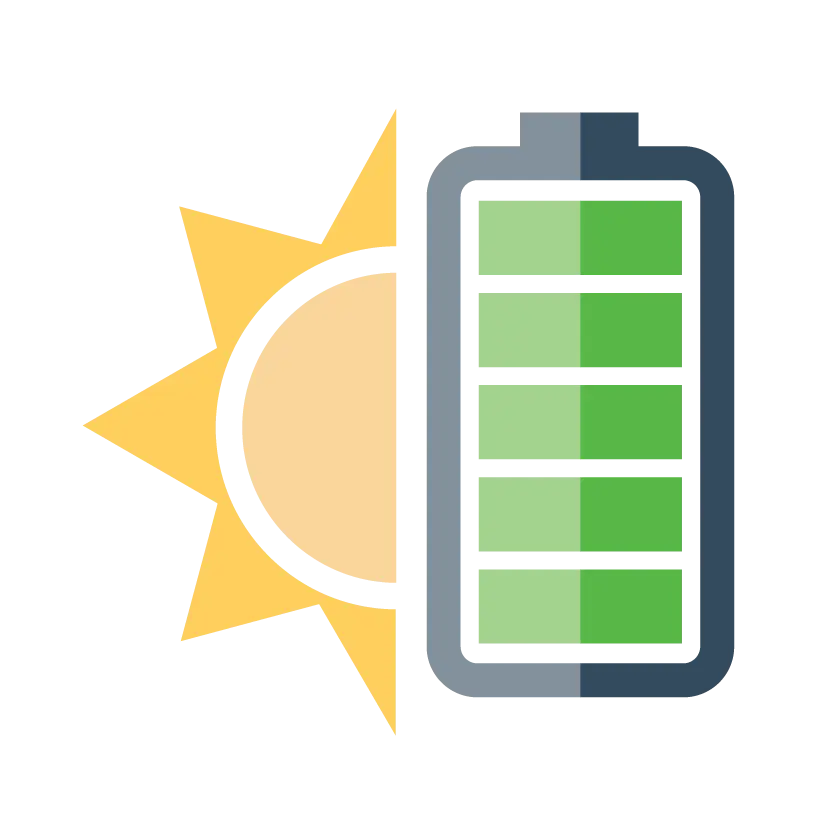
Solar and AC power options are available
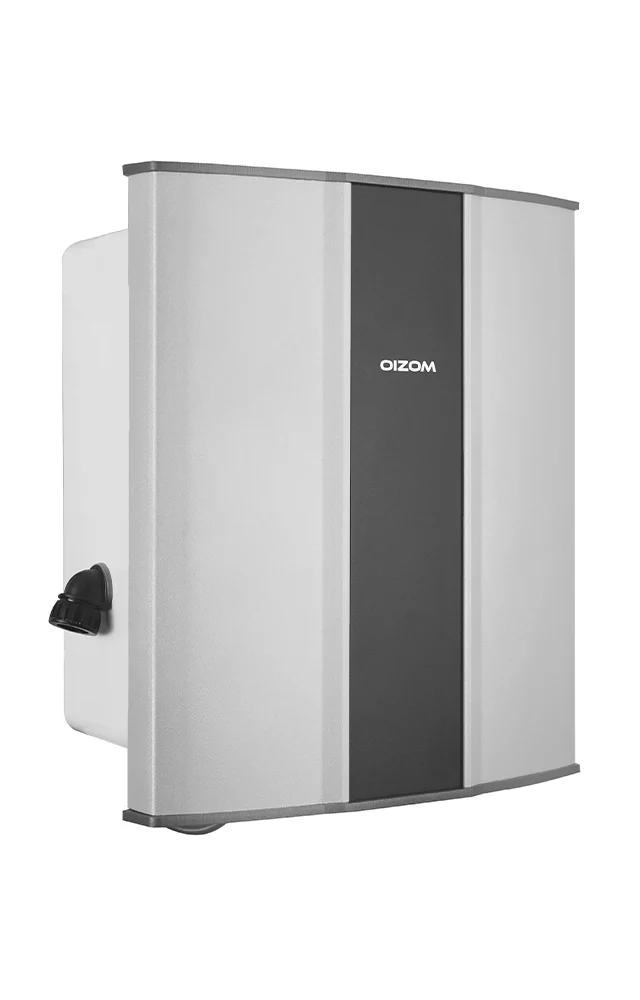

Real-time tracking of particulate matter, gases, and environmental conditions

Rugged design suitable for harsh US weather conditions

On-site device calibration capability using built-in calibration software
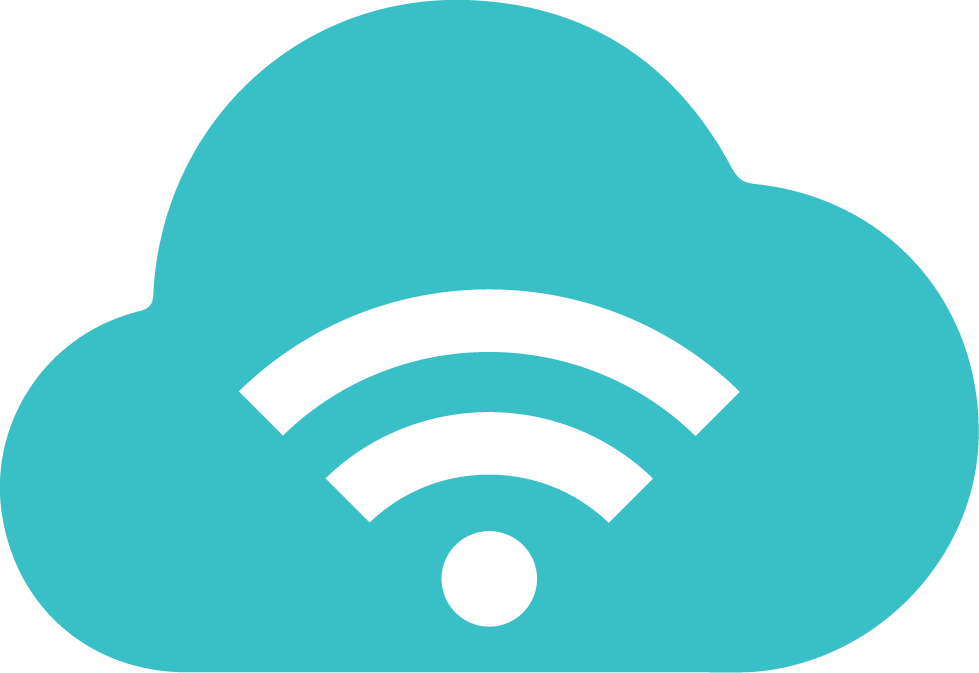
IoT-based air quality monitoring system with secure remote access
How Does Our Software Perfectly Compliment Our Air Quality Monitors?
Envizom is an advanced environmental monitoring solution designed to complement Polludrone seamlessly. It is a part of Oizom’s air quality monitoring solution. Envizom’s real-time data collection and analytics capabilities enable effective decision-making for environmental management. Its integration with Polludrone enhances the overall effectiveness, providing a more holistic approach to air quality monitoring. Together, they form a robust toolset for environmental assessment, crucial for urban planning, health risk analysis, and regulatory compliance.
Our sensing technology works on proven working principles like NDIR, Electrochemical Analysis, Semiconductor, Optical Measurement, and Laser-Scattering. In addition, as a part of our proprietary ‘Micro Active Sampling’ (e-breathing technology), we have a sophisticated suction-and-exhaust system for air sample collection and monitoring inside a controlled environment. The technology isolates the external environment’s effect on measurement to achieve 13% higher accuracy than the industry standards.
Laser Scattering: The sensor emits a laser beam to diffract through the air sample collected in the equipment. Therefore, the intensity of the beam scattered from the particles provides particle size distribution and concentration data.
Electrochemical Analysis: The gaseous emission is treated electrochemically, where an external potential is applied. Hence, each species such as CO2, H2S, CH4 is identifiable depending on their oxidation or reduction potential.
NDIR: The gases emitted from the location undergo Nondispersive Infrared Radiation where the air sample comes in contact with the infrared radiation. Different gaseous molecules absorb IR at different frequencies. So, the amount of IR absorbed gives the volumetric concentration of each gaseous constituent.
The first one is by using our Air Quality Software – Envizom. It is equipped with below features:
- User-friendly interface
- Smart alerts and reports
- Real-time data
- Set thresholds to automate the integrated systems
- Easy to set up
Another way to access the dust data is using secured HTTP/MQTT APIs. The data can be published on Public Displays, Smart TVs, Websites (using widgets), and Mobile Apps by using the APIs
Product Applications
Polludrone Variants
The Polludrone air monitoring system has three variants available: Polludrone Lite, Polludrone Smart, and Polludrone Pro. These product variants are designed to target different applications and use cases. Check out all the details about these variants and choose what is best for your industry niche.
Polludrone Custom
Do you know you can fully customize your air quality monitoring system with Oizom?
Schedule a call with our team of experts and get a customised solution for your air quality monitoring requirement.
Discover how Governments, Industries and Communities have benefited from Polludrone
How Our AQMS Works
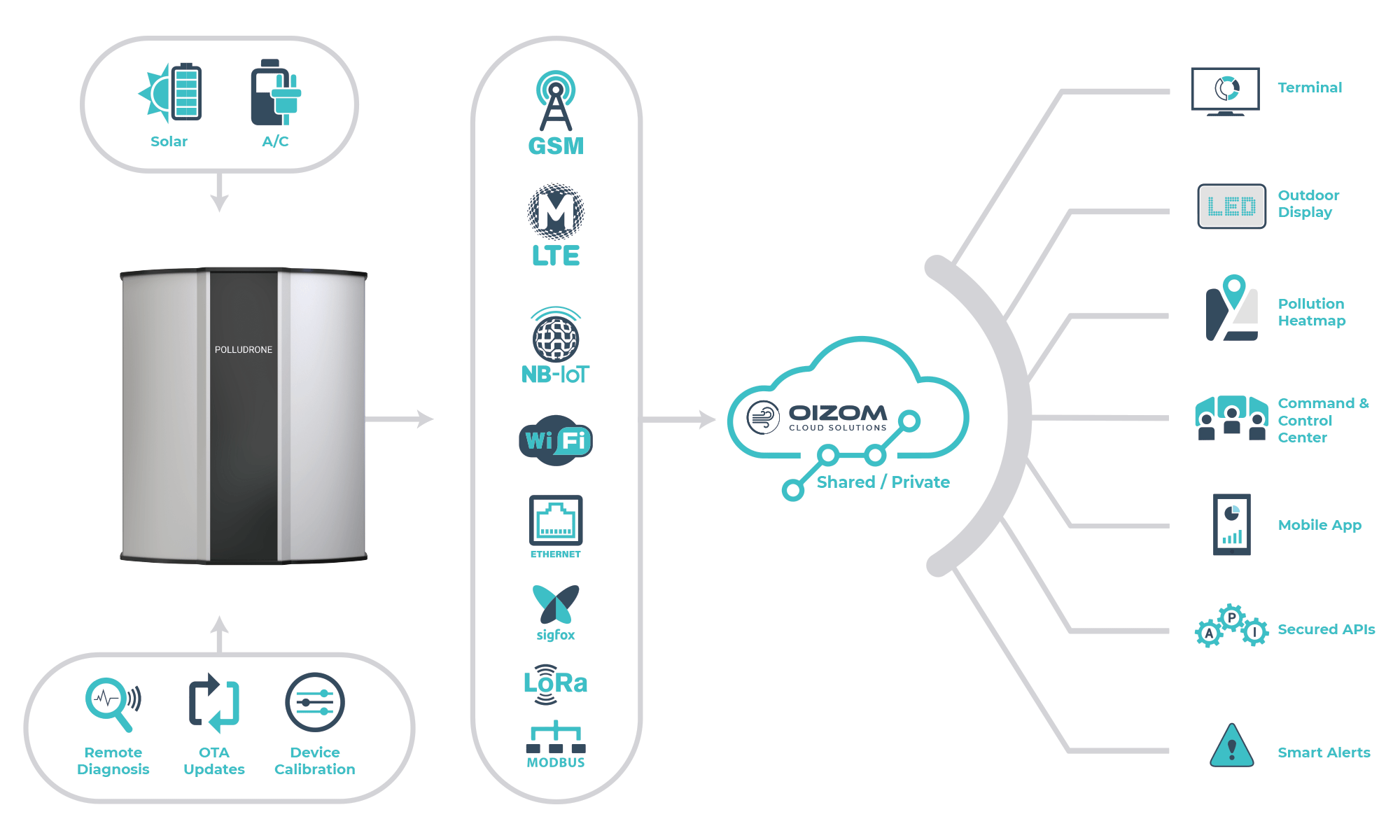
Polludrone is designed with an ultra-modular approach to accommodate any existing infrastructure. This versatile dust monitor can be powered through multiple sources, including External AC or DC power, with the option of Solar Power.
Regarding data transmission, Polldrone exhibits remarkable flexibility, supporting a wide array of Wired and Wireless channels. It is equipped to communicate wirelessly using GSM, GPRS, 3G, WiFi, LORA, LTE, and SIGFOX technologies. It offers reliable Ethernet, Modbus, RS-485, and RS-283 options for wired connectivity.
The crucial data on ambient air particulates collected by Polludrone is efficiently transmitted to the Oizom Cloud, which can operate on either Shared or Private Infrastructure. This data is instrumental in powering diverse data solutions tailored to specific end applications.
Furthermore, Polludrone’s data can be vividly visualized and meticulously analyzed through the Envizom. The system allows for configuring intelligent dust alerts based on the data received from Polludrone. This data can also be leveraged to regulate various process equipment, enabling automated and efficient operational solutions.
The system can generate automated reports, enhancing the ease of documentation and analysis. Additionally, Polludrone’s data facilitates real-time air quality impact assessments, providing invaluable insights for effective management.
Learn More About Polludrone
Product Video
Polludrone Video explains everything you need to know about our range of Air Quality Monitoring Systems. In addition, you may watch the Polludrone Video to understand its Capabilities in terms of Parameters, Working Principles, Communication Protocols, Power Requirements, and Data accessibility. It’s a 4-minute 19 seconds video covering all the essential aspects of Ambient Air Quality Monitoring.
Polludrone FAQs
Common air quality pollutants include:
- Particulate Matter (PM2.5 and PM10): Fine particles that can penetrate the lungs and affect heart and lung function.
- Nitrogen Dioxide (NO2): A reactive gas from vehicle exhausts, contributing to smog and acid rain.
- Sulfur Dioxide (SO2): A gas from fossil fuel combustion at power plants and industrial facilities that can cause respiratory issues and acid rain.
- Carbon Monoxide (CO): An odorless, colorless gas from incomplete combustion, dangerous at high levels.
- Ozone (O3): A gas that forms in the atmosphere from reactions between organic compounds and nitrogen oxides under sunlight.
- Volatile Organic Compounds (VOCs): Organic chemicals that can cause health problems like headaches and liver damage.
- Lead (Pb): A toxic metal released from industrial processes and previously, from leaded gasoline.
- Ammonia (NH3): A gas mainly emitted from agricultural processes.
Safe levels of air pollutants are set by regulatory bodies like the Environmental Protection Agency (EPA) in the U.S. and the World Health Organization (WHO) globally. These levels vary by pollutant, with standards set for the concentration of each substance that should not be exceeded to protect human health. For example, the WHO recommends PM2.5 not exceed an annual mean of 10 µg/m3 and a 24-hour mean of 25 µg/m3.
Monitoring air quality is essential to:
- Protect public health by reducing exposure to harmful pollutants.
- Identify the sources and patterns of pollution for targeted action.
- Inform the public and issue warnings on poor air quality days.
- Assess the effectiveness of regulations and control measures.
- Understand long-term trends and the impact of climate change.
Our continuous air quality monitoring device uses a network of environmental air quality sensors to measure the concentration of various air pollutants continuously. These sensors are sensitive to specific types of pollutants and can provide real-time ambient air quality data. This data is then processed and analyzed to provide insights and alerts, which can be accessed through a dashboard or mobile application.
Key features of our air quality monitoring system include:
- Real-Time Data Access: Via a user-friendly dashboard or API for easy integration with other systems.
- Customizable Alerts: To notify when pollutant levels rise above predefined thresholds.
- Data Analytics Tools: To track trends and forecast potential air quality issues.
- Durable Design: Capable of withstanding various environmental conditions.
- Smart Calibration: Ensuring that sensors remain accurate over time.
- Multi-Pollutant Detection: Ability to monitor multiple pollutants simultaneously.










